Norway Coastal Express in Winter: Solo Travel Guide + Review
Planning to take the Norway Coastal Express in winter as a solo traveller, but not sure what to expect?
This ultimate guide will walk you through everything you need to know about the Norway Coastal Express – from booking and what the cabins are really like, to what to pack, what life is like on board, and whether it’s actually worth it as a solo traveller.
I sailed the full round trip from Bergen to Kirkenes solo this past March, and while it was one of the most beautiful trips I’ve ever done, there were still plenty of things I wish I’d known before!
Like how daylight hours really affect sightseeing, what “included meals” actually means, and how to make the most of those quick 15-minute port stops…
So if you’re dreaming of snow-covered Arctic landscapes, quiet mornings at sea, and a true winter adventure, this is the ultimate solo traveller’s guide to the Norway Coastal Express in winter – from how to plan it and whether to choose Hurtigruten or Havila, to what it’s really like cruising alone and why it might just become one of your all-time favourite solo trips!
Disclaimer: Some of the links on this blog are affiliate links. That means if you click on one and make a purchase, I may earn a small commission – at no extra cost to you. I only recommend products, places and services I genuinely love and use on my own solo travels. Thank you for supporting my adventures so I can continue to provide free content on this blog! 💛
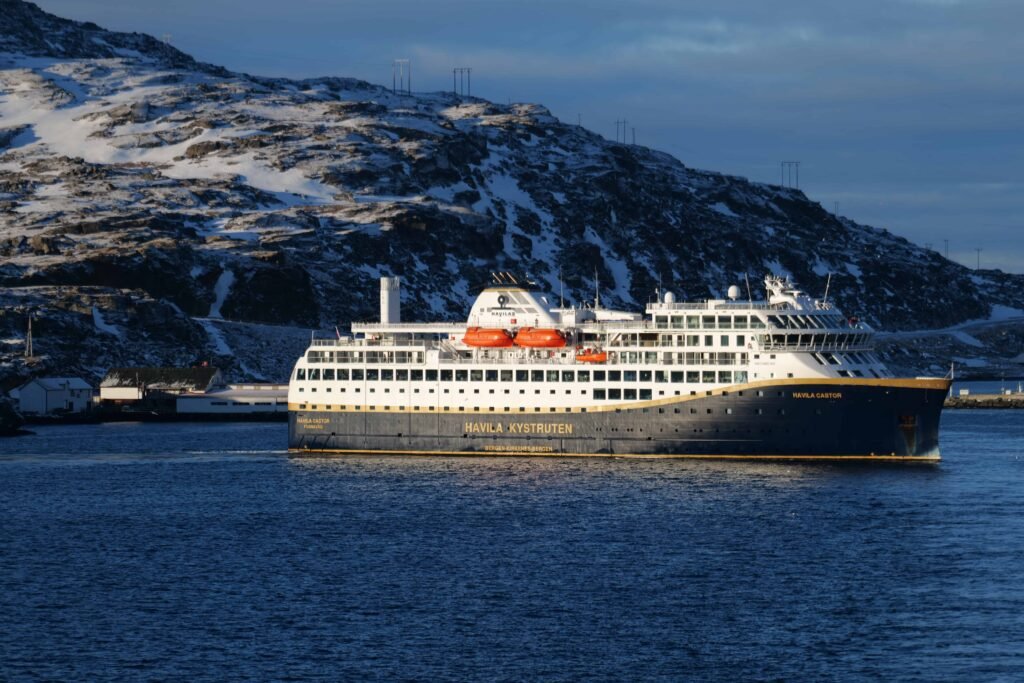
What is the Norway Coastal Express?
The Norway Coastal Express definitely isn’t your typical cruise. It’s actually a historic working sea route that’s been connecting Norway’s most remote coastal communities since 1893.
Nowadays, both the Hurtigruten and Havila ships that run this route are part passenger ferry, part postal ship and, more recently, part tourist cruise.
The full voyage runs between Bergen in the south and Kirkenes in the far north, near the Russian border, stopping at over 30 ports along the way!
And, also unlike a standard cruise, this vital route operates daily, all year round.
Onboard, you’ll share the ship with locals commuting between towns, mail being loaded on and off, and also fellow travellers chasing the Northern Lights or dramatic Arctic scenery.
For me, that unique mix of the route being a lifeline for local life, but also an incredible travel experience, is what made my journey on the Norway Coastal Express in winter so special.
Sure, it wasn’t flashy with endless buffets or large-scale entertainment, but it felt local, authentic, and not to mention utterly breathtaking!
Katie’s Top Tip: If you’re looking for a traditional cruise experience with all of the luxurious extras, from West End-style theatre shows to relaxing spa days, this probably isn’t the voyage for you. But if you’re looking for a winter adventure, on board a comfortable but practical ship, keep on reading. Like me, you might just find that the Norway Coastal Express in winter becomes your dream solo trip!

When Is the Best Time for the Norway Coastal Express?
The Norway Coastal Express in winter is truly magical! It’s Northern Lights season, the landscapes are covered in snow, and you can enjoy some of the most incredible excursions, from dog sledding to reindeer feeding.
But each season along this route offers something different.
Winter (November–March) is my personal favourite! You’ll get snow-covered mountains, an extra cosy atmosphere onboard, and of course the chance to see the Northern Lights. Just expect shorter days, more unpredictable weather and colder temperatures.
Spring (April–May) and Autumn (September–October) bring longer daylight hours for sightseeing, (generally) calmer seas and weather conditions, and more powerful waterfalls. It’s also quieter and more affordable as it’s shoulder season.
Summer (June–August) is by far the most popular and expensive season to visit Norway, with the incredible midnight sun and warmer weather, but much busier ships.
Katie’s Top Tip: I honestly think the Norway Coastal Express in winter is unbeatable! But I would recommend you specifically book in February or March for the best of both worlds. That way, you’re still covered by the Northern Lights guarantee (more on this in a bit!), but you also have longer daylight hours for sightseeing, compared to December or January.

The Norway Coastal Express Timetable & How It Works
This is where things can get confusing if you’re used to looking at traditional cruises that only leave on set dates.
The Norway Coastal Express timetable runs like clockwork. Every single day, a ship leaves Bergen and another leaves Kirkenes, crossing paths somewhere in the middle.
In fact, you’ll cross paths with multiple ships (both Havila and Hurtigruten) throughout the voyage. And it’s always fun to be out on deck at this point, as each ship sounds its horn in greeting!
Timings & Schedule
To take the full Norway Coastal Express in winter, these are the timings:
- The full Coastal Express from Bergen to Kirkenes (and back again) takes 12 days.
- The one-way journey between Bergen and Kirkenes (Northbound) takes 7 days.
- The one-way journey between Kirkenes and Bergen (Southbound) takes 6 days.
So you can book the full voyage (in one or both directions) or shorter sections, more like a ferry.
The most popular shorter sections of the Coastal Express are:
- Bergen to Trondheim
- Bergen to Ålesund
- Bergen to Tromsø
- Tromsø to Kirkenes
- Tromsø to Svolvaer
This unrivalled flexibility is part of what makes the Norway Coastal Express itinerary so accessible for all kinds of different travellers, whether you want to use the service as a ferry to explore Norway at your own pace or enjoy a more “cruise-like” experience.
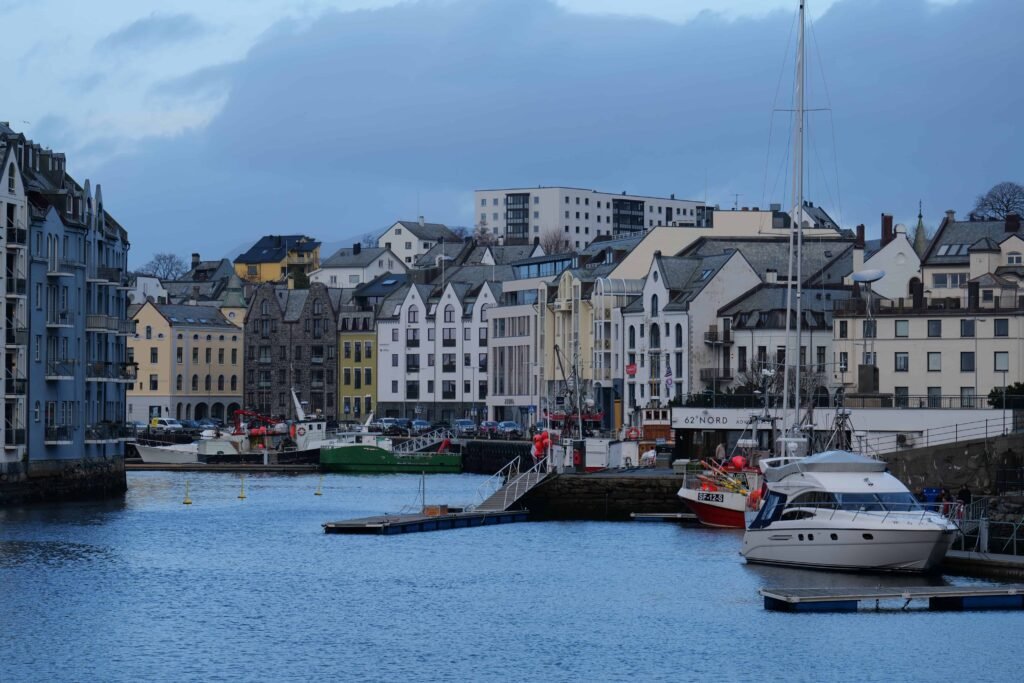
Major vs Minor Port Calls
You also need to know that ports on the Coastal Express are divided into major and minor stops.
Some ports last a few hours up to a full day, giving you plenty of time to explore popular towns like Ålesund, Trondheim or Tromsø.
These main ports of call on the Norway Coastal Express in winter are:
Northbound:
- Ålesund (10 hours)
- Trondheim (3 hours)
- Bodø (2 hours 15 minutes)
- Tromsø (4 hours)
- Honningsvåg (3 hours 30 minutes)
- Kirkenes (3 hours)
Southbound:
- Hammerfest (1 hour 45 minutes)
- Stokmarknes (1 hour)
- Svolvaer (2 hours)
- Brønnøysund (2 hours 25 minutes)
- Trondheim (3 hours)
- Kristiansund (1 hour)
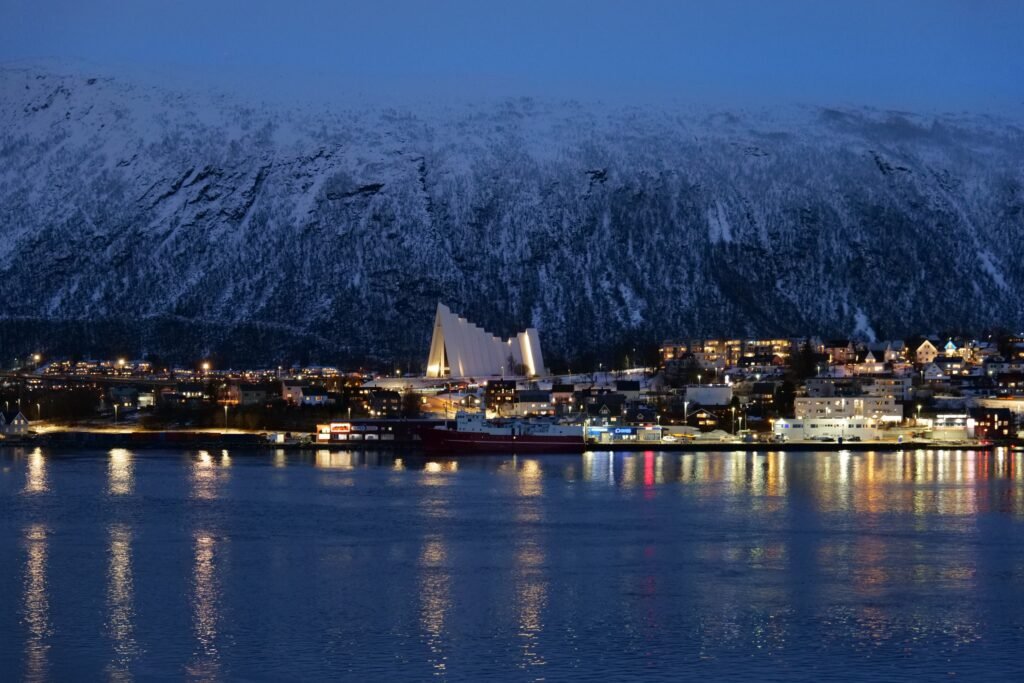
Whereas other ports of call are quick 10 or 15-minute stops to drop off mail or cargo.
(But that is still plenty of time to snap some beautiful photos of these tiny ports, especially from the top Deck of the ship!)
Some of my favourite (and the most beautiful!) short port stops were:
- Ørnes (day 4)
- Havøysund (day 6 & 8)
- Kjøllefjord (day 6)
- Vardø (day 7)
- Øksfjord (day 8)
- Risøyhamn (day 9)
- Sandnessjøen (day 10)

What really surprised me, though, was how punctual everything is.
Even in Arctic winter, ships depart almost exactly on time (I was only delayed once, whilst waiting to travel between Svolvaer and Tromsø).
But do keep in mind that, due to the weather, you may experience delayed or cancelled ports.
My motto was to just take each day as it comes, but hope for the best. And I know I was very fortunate with my sailing!
Katie’s Top Tip: You can find the up-to-date timetable with exact times online. Onboard Havila, you will also receive a daily schedule posted on the notice boards and on your TV screen in your cabin. Plus, there are tannoy announcements and daily briefings to join too.
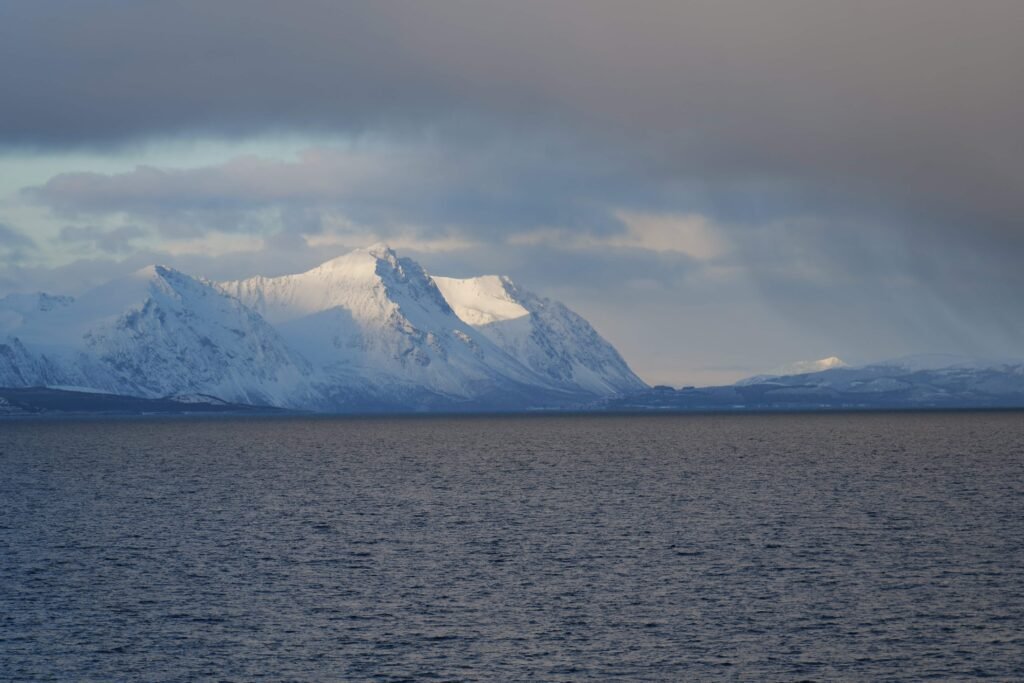
How to Book Your Norway Coastal Express Voyage
If you’re planning to sail the Norway Coastal Express in winter, the best way to book is directly through the company’s own website, whether that’s Havila or Hurtigruten.
On both websites, you’ll find clear route maps, timetables, excursions, and dining information all in one place, which is so reassuring when you’re organising everything solo!
Plus, booking direct also gives you access to their latest deals, which you might miss on third-party sites.
I personally found Havila’s website far easier to use, but that’s just my opinion.
The booking process itself is very simple:
- Pick your departure date
- Choose how many nights you want (12-day round-trip, 7-day Bergen one-way, 6-day Kirkenes one-way, or a shorter section of the route)
- Select your cabin type (interior, sea view or suite)
- Add any extras or excursions if you wish
Katie’s Top Tip: Once you’ve booked, you’ll receive confirmation and a detailed itinerary by email. It will also give you access to your account, where you can easily manage everything about your voyage, from adding excursions and luxury extras to logging dietary requirements and arranging transport.
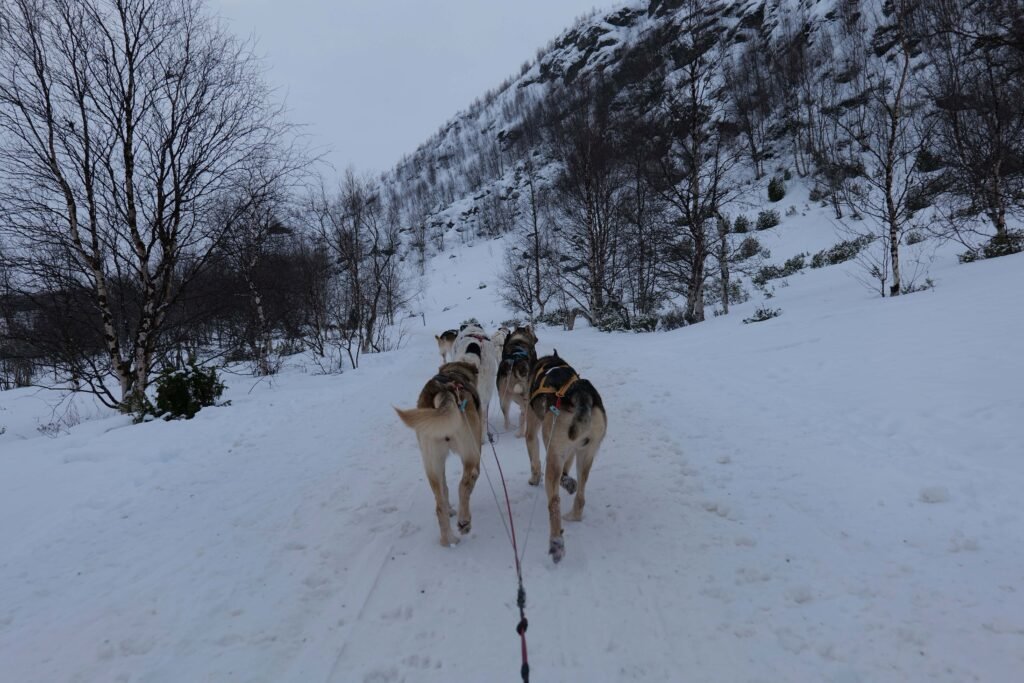
Havila vs Hurtigruten: What’s the Difference?
If you’ve started researching the Norwegian Coastal Express cruise, chances are you’ve seen two names come up again and again: Havila and Hurtigruten.
Both of these companies run ships along the same route (the Coastal Express route), stopping at all of the same ports and offering the same schedule.
The only real difference between the two can be found in their ships, values, onboard experience and also, for solo travellers especially, their cost.
The Coastal Express With Havila Voyages
Havila is the newer company of the two, with its first ship, Havila Capella, making its maiden voyage in December 2021.
Their current fleet of four ships (Capella, Castor, Pollux and Polaris) are all powered by liquified natural gas and battery packs, making them some of the most eco-friendly vessels in the world.
The interior décor on Havila’s vessels is cosy, modern and unmistakably Scandinavian, with lots of wood, big windows, soft lighting, cosy soft furnishings and even electric fires.
And then with food, meals are à la carte from a menu that changes four times throughout the full round-trip, rather than buffet-style. This feels more relaxed and authentic, and also reduces waste.
But the biggest difference when I was deciding between the two was the price. Havila removes the solo supplement around 90 days before sailing on many departures.

The Original Coastal Express With Hurtigruten
Hurtigruten, on the other hand, has been running this route since it began in 1893.
Their ships are therefore older and also busier because they are more well-known, with a more traditional feel and more dated décor (although this is slowly being renovated on some ships).
I also found their pricing to be less transparent as a solo female traveller.
Even when I phoned up to ask about their Black Friday deals, they still couldn’t beat the price Havila was offering at the time.
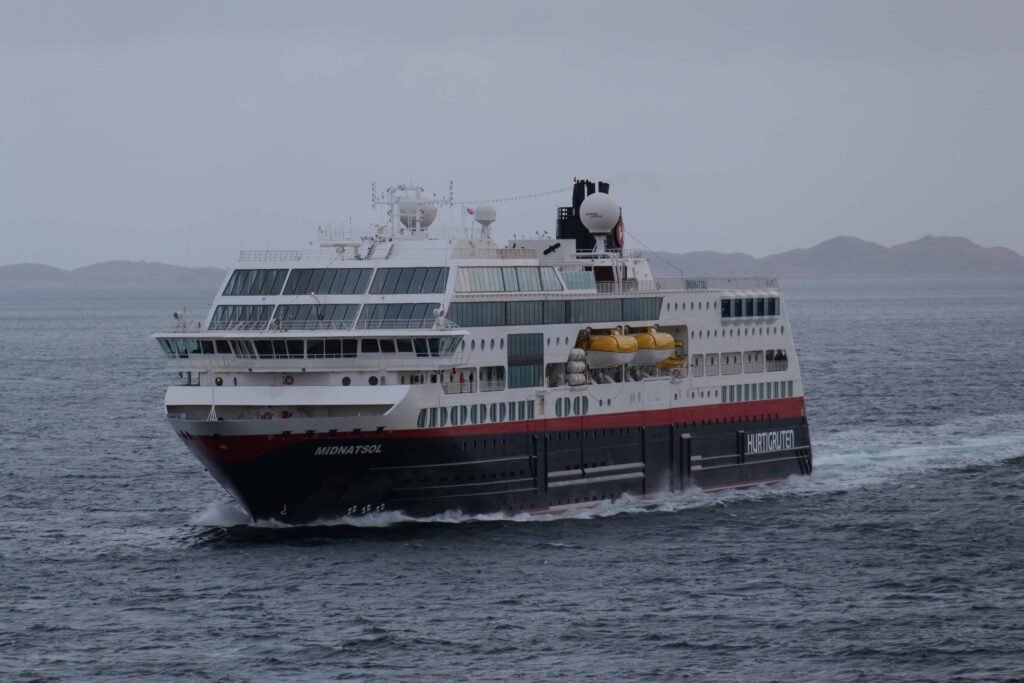
Hurtigruten vs Havila: My Personal Pick
I personally chose Havila for my voyage for two main reasons.
First, I loved the look of the cabins and interiors of the ship. Especially the fact that it looked so cosy, minimalist and bright – and the panorama lounge in particular is just beautiful!
And then second, the lack of a solo supplement made it so much more affordable for me. I was happy to wait for the 90 days before sailing to book, and the price I paid would’ve never been beaten by Hurtigruten (I even phoned and asked).
But honestly, you can’t really go wrong with either. Both Havila and Hurtigruten cover the same route, offer the same or similar excursions, and take in the same beautiful ports and scenery.
So ultimately it just depends on your preference for the interiors of the ship and, most importantly, the price difference.
Katie’s Top Tip: If you’re a solo traveller who values cosy and modern interiors, good food and transparent solo pricing, go for Havila. But if you want the busier social atmosphere of joining the original Coastal Express, and don’t mind older interiors, Hurtigruten might suit you better.

How Much Does The Norway Coastal Express Cost?
I’ve got to be honest, the Norway Coastal Express isn’t cheap, but it is worth every penny.
For context, I paid around £3200 for my February-March round-trip sailing on Havila, including a sea view cabin, all meals (breakfast, lunch and dinner), and excursions in Trondheim, Bodø, Honningsvåg, Kirkenes, Hammerfest and Tromsø.
But it’s important to note that prices vary depending on season, cabin type and how far in advance you book, so it could be a lot cheaper, or more expensive.
In my personal experience, Havila tended to be more affordable than Hurtigruten, even after phoning Hurtigruten up to discuss their rates.
What’s not included in the standard rate are alcohol, snacks, excursions and fine dining.
Katie’s Top Tip: To save on food, consider skipping the drinks package (tap water is always free) or bringing your own snacks from Bergen. I brought crisps, bakery snacks, a few sweet treats and also a bottle of soft drink to enjoy in my cabin. But to be honest, the meals were so filling I rarely needed them!
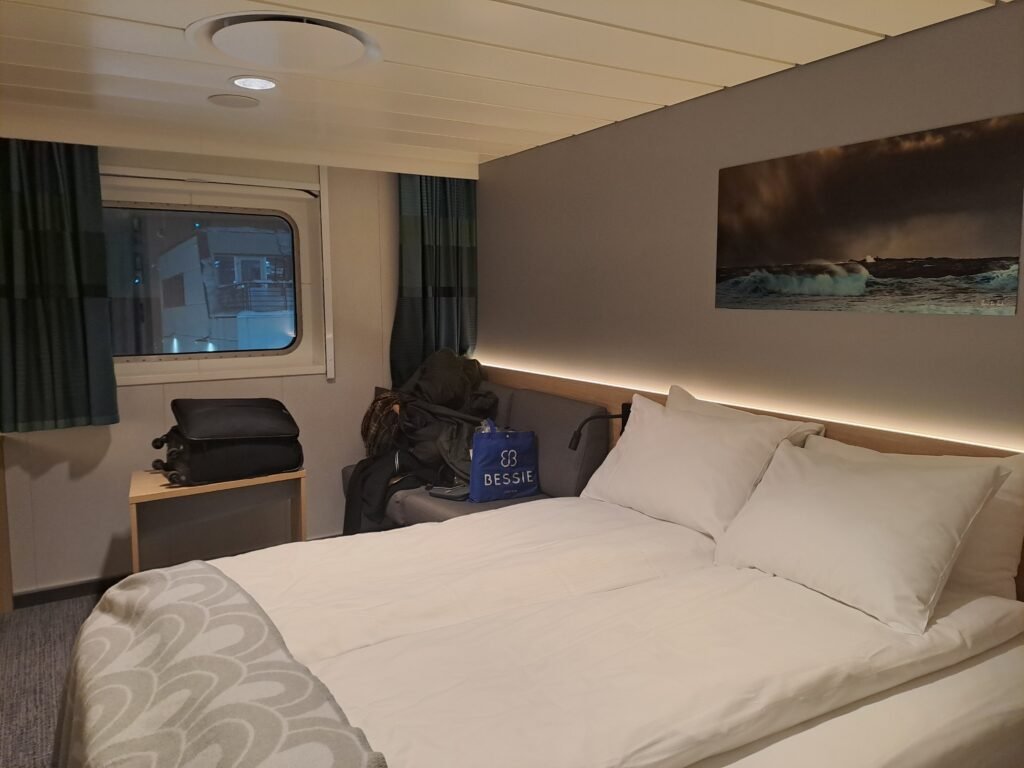
Solo Supplements
Let’s quickly talk about the solo supplement, because it’s one of the biggest questions for solo travellers booking any kind of cruise.
And yes, unfortunately, on both Hurtigruten and Havila, they do still charge a solo supplement.
However, there are still ways to save money (or even remove the supplement entirely).
On Havila’s Norway Coastal Express, they often remove the solo supplement around 90 days before sailing, meaning if you book last-minute, you can grab an interior or sea view cabin without paying extra.
I booked mine on January 1st for a February 28th sailing and paid no supplement at all!
But if you don’t want to leave the booking to the last minute, keep an eye out for their other regular special offers (especially in the shoulder seasons of spring and autumn, or around Black Friday).
Hurtigruten’s Norway Coastal Express pricing, on the other hand, is a bit less predictable.
They do offer great solo deals, but they’re not as frequent or predictable as Havila, and I personally found them to always be more expensive (even when I phoned up and checked around Black Friday).
But, having said that, when they do have deals, they tend to remove the supplement entirely instead of discounting it, so it’s still worth watching out for.
Katie’s Top Tip: With Havila, add a reminder in your calendar about 3 months before your ideal departure date to check prices. This is when the best deals tend to drop. With both, it is also a good idea to sign up for their newsletters, to be notified of any special deals.
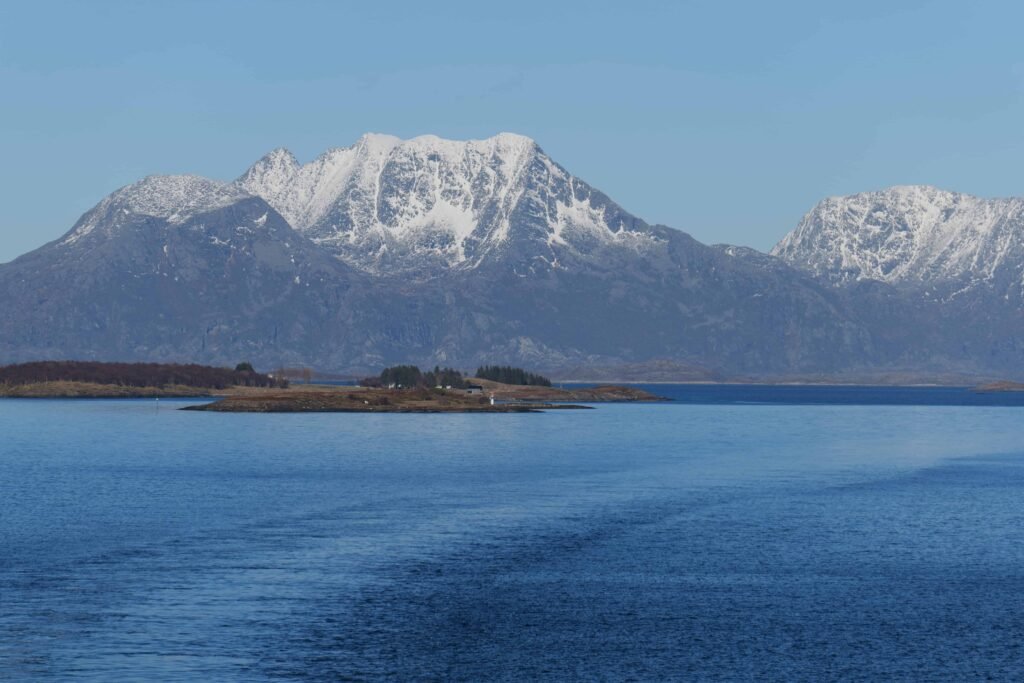
Getting To The Norway Coastal Express
Bergen
Your Norway Coastal Express in winter voyage almost always starts in Bergen, Norway’s second-largest city.
And getting there is super easy, with daily direct flights from major European and worldwide airports. Or you can take the scenic Bergen Railway from Oslo (this is what I did!)
If you have time, I recommend spending at least one night in Bergen before your voyage.
This gives you a buffer in case of weather delays. But also, the city itself is gorgeous in winter, with the colourful Bryggen Wharf, the funicular up to Mount Fløyen, and even boat trips to nearby Mostraumen Fjord.
Both Havila and Hurtigruten depart from the “Hurtigruten Terminal,” which is around a 15-minute walk from Byparken in central Bergen. Alternatively, you can take a taxi.
Upon arrival at the terminal, you will check your luggage and receive your room key on a lanyard (a bank card is needed for a small deposit that you will get back), before heading up to the waiting area.
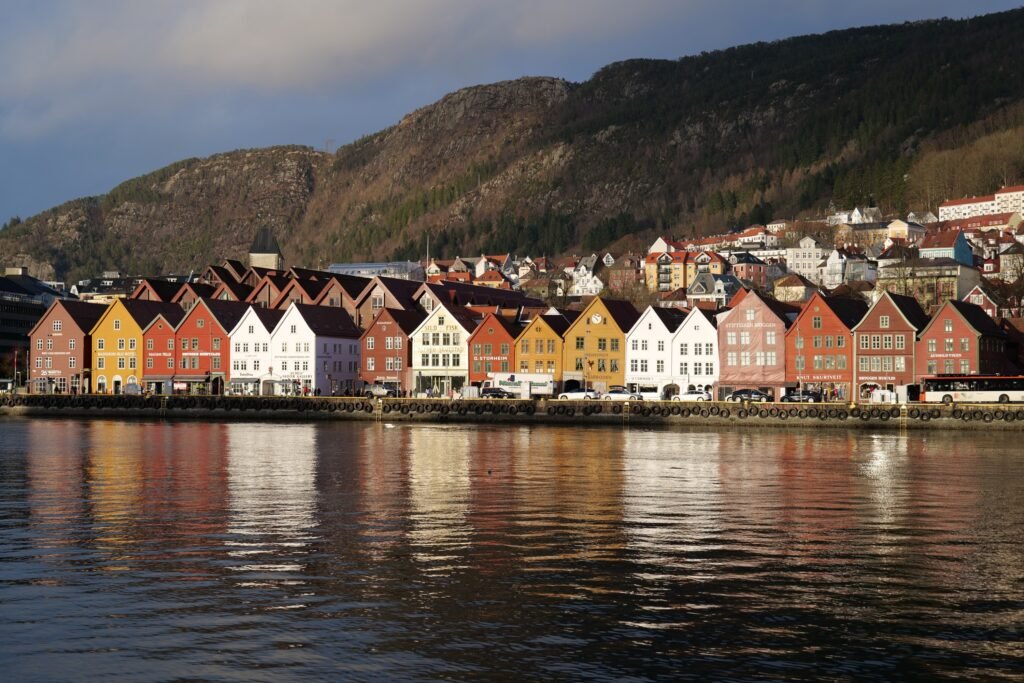
Kirkenes
At the northern end of the route, you may choose to embark or disembark in Kirkenes, a small town near the Russian border.
From Kirkenes, it’s a 2-hour flight back to Oslo, where you can then connect with airports around the world.
Or, a lot of guests choose to get off to stay at the nearby Snow Hotel, for the ultimate Arctic experience!
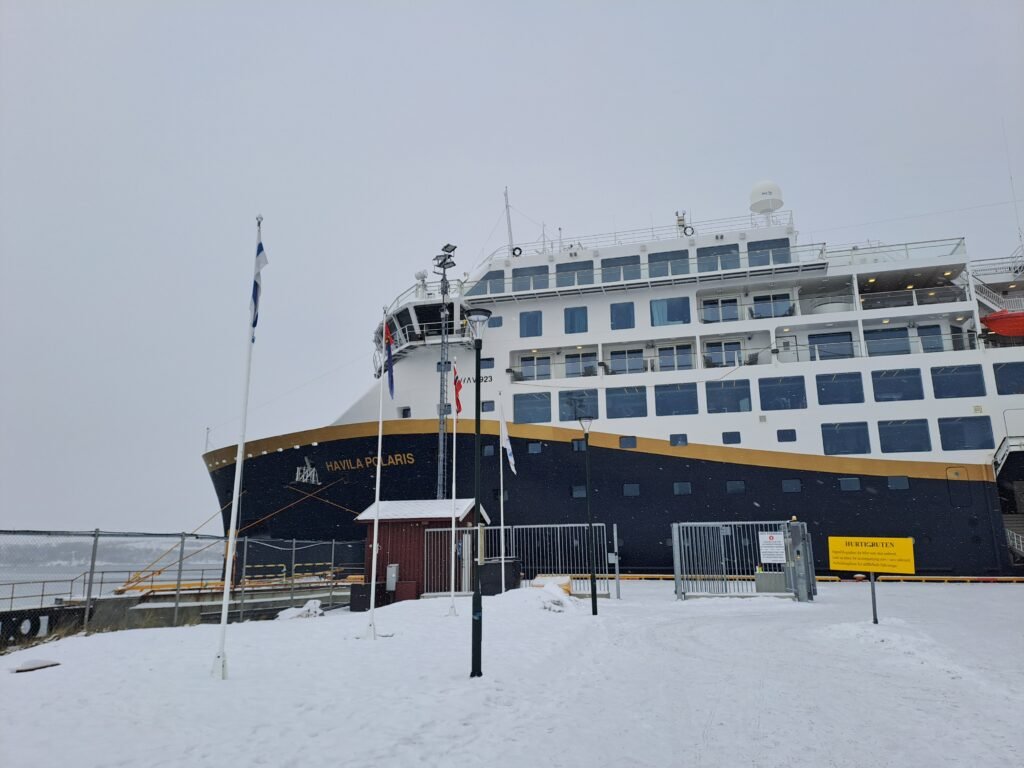
Life On Board The Norway Coastal Express
Cabins
Aboard Havila, there are 3 different grades of cabins: interior, seaview superior, and suites.
Havila Interior Cabins
Interior cabins are the most affordable and are usually booked by passengers wanting only a short hop on the Coastal Express.
I stayed in one during an overnight hop between Tromsø and Svolvaer, and it had two single beds, plus a private bathroom and a TV.
The décor was still beautiful and the furnishings still extremely cosy despite the cabin’s much smaller size!
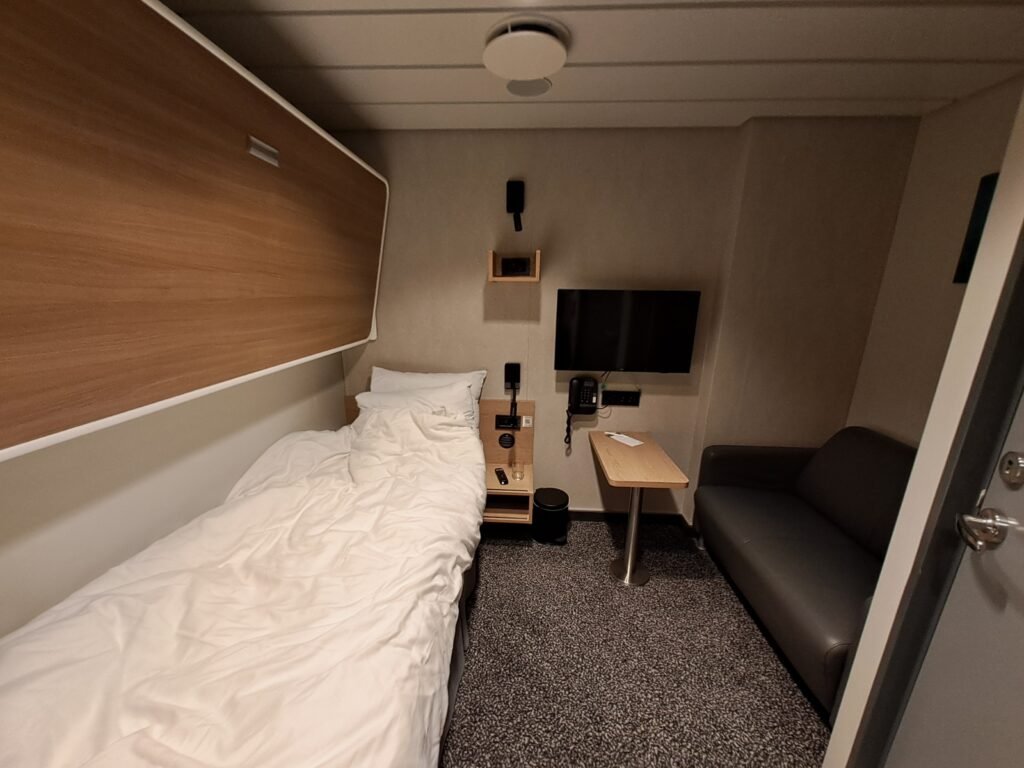
Havila Seaview Cabins
Seaview cabins are the most popular choice for guests on the longer voyages, and you can choose whether you want a double bed, two singles, a king or an accessible room.
During my own 12-day round-trip in March, I stayed in a seaview cabin with a double bed.
My cabin was located on deck 4 of Havila Polaris and had a private bathroom, a large window, a comfy queen bed, a sofa, a desk, a fridge, a kettle and a TV.
And honestly? It was one of the most peaceful rooms I’ve ever had on a trip, and definitely not what I would’ve expected from a working postal ship!
The design was clean and minimal, with a beautiful picture window, heated floors in the bathroom and clever storage.
It honestly felt more like a boutique hotel room than a cabin on a ship!
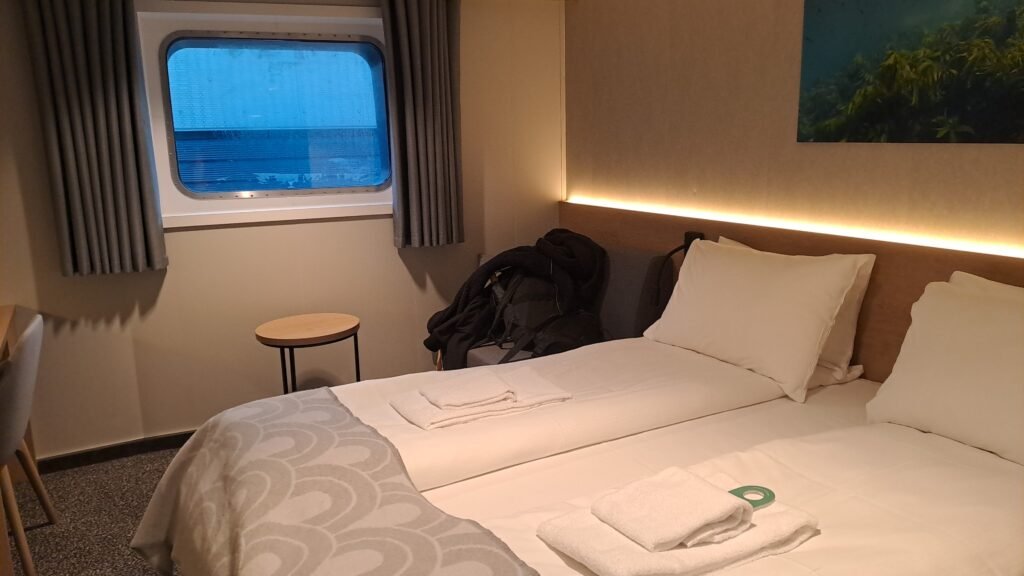
Havila Suites
Suites are perfect if you want an extra touch of luxury during your voyage!
You can choose between a mini or junior suite with floor-to-ceiling windows, or a premium suite with a private balcony.
All suites onboard Havila have all of the same amenities as the seaview cabins, plus some luxurious extras. Including a separate seating area, a bathrobe and slippers, and of course those beautiful panoramic windows!
The most luxurious (and most expensive!) suite onboard is the Lighthouse Suite, which has a separate bedroom and a balcony with its own private jacuzzi.
Plus, all suite guests dine in the luxurious Hildring Fine Dining restaurant during their stay.
Hurtigruten Cabins
Hurtigruten’s cabins are very similar to Havila’s, but the interiors are definitely not as modern.
You can choose from:
- A Polar Inside Cabin (twin or triple beds, no window, private bathroom)
- A Polar Outside Cabin (twin, triple or double beds, private bathroom, small window or porthole – some with a restricted view)
- An Arctic Superior Cabin (double beds with a private bathroom and picture window)
- An Expedition Suite (double beds with a private bathroom, two rooms and a large window)
But, as I mentioned earlier, I was unable to find pricing with Hurtigruten that matched Havila (both in terms of plain costs and in terms of the beautiful interiors Havila offer).
Katie’s Top Tip: The cabin room key you will receive when you board a Havila voyage doubles as your onboard payment card and means of entering and exiting the ship, so keep it handy at all times!
Food & Dining
Havila Restaurants and Bars
Havila’s dining experience is very different to the normal buffet spread you would get on a typical cruise – but I love that!
Each meal is served as a series of small plates made from locally sourced Norwegian ingredients, and the menu changes every few days (four times per round trip) to reflect where you are in the country.
It’s sustainable, seasonal and surprisingly varied – with a few staple dishes always on the menu throughout, so you know there is always something you’ll enjoy!
When booking my voyage, I found that breakfast, lunch and dinner were included in all one-way (Southbound or Northbound) or round-trip sailings.
When I was booking my short, overnight hops, food was not included.
Havila has three eateries onboard, all on deck 6:
- Havrand Restaurant – where breakfast, lunch and dinner are served for all one-way and round-trip passengers, plus paying guests.
- Havly Café – where you can pick up lunch or dinner for an extra cost, or snacks or coffee throughout the day. It serves more international food, like burgers and pizza.
- Hildring Fine Dining – where suite passengers dine for breakfast, lunch and dinner, and you can also upgrade to dine here too, if you wish.
There are also two bars onboard Havila:
- Havblikk Bar & Lounge – located on deck 9, with comfy seating and panoramic windows, this is the main bar.
- Havbris Bar – located on deck 8, this bar is outside and is only open when the weather is ok. During my voyage, this is where the Arctic Circle ceremony was held.

Breakfast Onboard Havila
Breakfast with Havila is anytime between 7am and 10am in the main Havrand Restaurant.
Or between 7:30am and 10am in the Hildring Fine Dining restaurant for suite guests only.
During my voyage, I dined in the Havrand Restaurant, and found that breakfast options remained the same throughout the whole voyage, and were served in two parts.
There is a menu of hot small plates, from eggs with bacon and oatmeal to sausages and pancakes, which you can order directly from a waiter, as well as tea, coffee or juices.
Then there is also a cold buffet to choose from, with cereals, fresh fruits, bread and meats.
Seating for breakfast is open and very relaxed, and as a solo traveller, you can choose whether you would like a solo or shared table.

Lunch Onboard Havila
Lunch was my favourite meal onboard Havila, and for this everyone dines in the main Havrand restaurant (or you could choose to go to the café).
You are encouraged to pick 3 dishes from a menu of small plates (although you can choose more or less). And then there is also a secret dessert each day.
The lunch menu also changes four times throughout the round-trip voyage, to reflect where you currently are in Norway, so you know you’re always eating fresh and local!
Some of my favourite small plates were the risoni, the crispy potatoes and the sausages.
Seating for lunch remains the same throughout the voyage, and you also choose a set time before you board in either Bergen or Kirkenes. But again, you can choose a solo or group table.
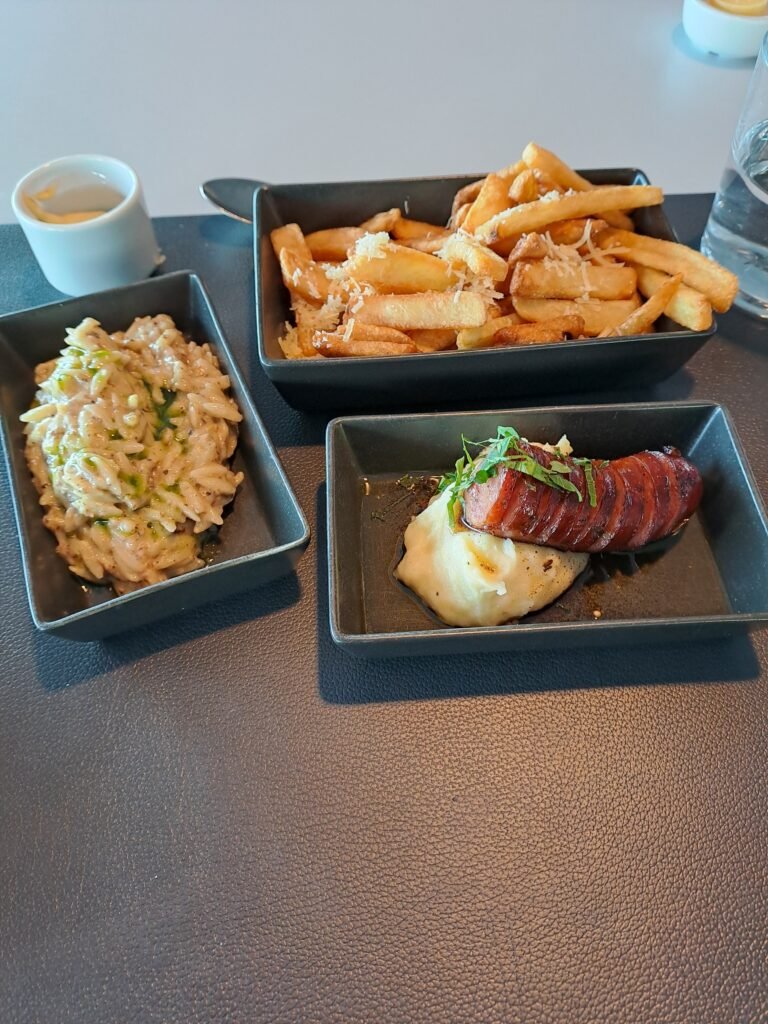
Dinner Onboard Havila
You can either have dinner in the main Havrand Restaurant (included for full voyage passengers) or in the Hildring fine dining restaurant (for an extra fee).
I dined in the Havrand Restaurant throughout my 12-day voyage, and again the menu changed four times to reflect our location in Norway (with a few options that always stayed the same).
The dinner is three courses, with a starter, main and dessert. (Although personally I could never manage a starter – I was always so full!)
Alongside each main, you also had a platter called “the farmers market,” with fresh, local sides to accompany your meal.
Some of my favourite mains were the steak, the tomato pasta, the salmon and the pork.
Some of my favourite desserts were the apple cake and the white chocolate ice cream.
Seating for dinner remains the same throughout the voyage, and you also choose a set time before you board in either Bergen or Kirkenes. But again, you can choose a solo or group table.
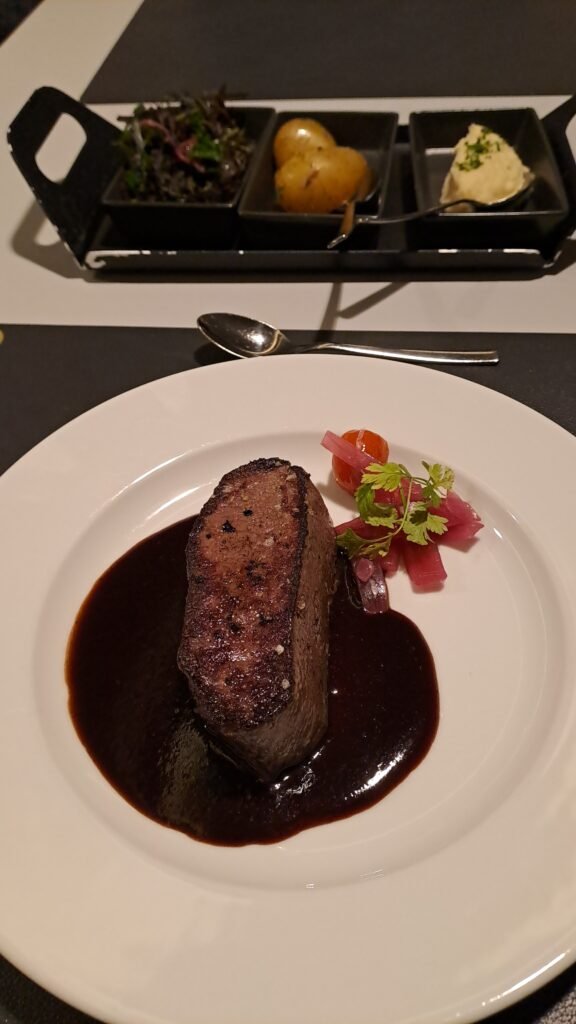
Hurtigruten Restaurants and Bars
If you’re on Hurtigruten, there are five restaurants and bars to choose from.
Torget is the main restaurant onboard, serving a hot and cold breakfast buffet (from 7am), a plated and buffet lunch (from 12pm), and a three-course dinner (from 6pm with set seatings).
Kysten is the onboard a la carte restaurant, which you can upgrade to if you wish. It offers a menu that emphasises local ingredients like seafood, kelp, seaweed and reindeer.
Brygga is the onboard bistro, with more international foods like pizzas, chips, burgers and sandwiches.
Multe is the onboard café, with a bakery serving sandwiches, coffees, ice creams and cakes.
The Explorer Bar is similar to Havila’s Havblikk Bar, serving drinks in a panoramic lounge with floor-to-ceiling windows.
Katie’s Top Tip: For reference, my lunch time on Havila was 12pm and my dinner time was 6:30pm (and yes, as a keen photographer, I did painstakingly time this around the best scenery and excursions – so feel free to steal it!)
Public Spaces & Lounges
One of the things I loved most about the Norway Coastal Express in winter was how easy it was to find a cosy corner just for yourself!
Havila’s ships have been thoughtfully designed for comfort and cosiness, so you’ll never struggle to find a quiet seat with a spectacular sea view.
My favourite spot was the Panorama Lounge on deck 9, with huge floor-to-ceiling glass windows, comfy swivel chairs, a bar, TVs, and direct access to the outside deck for photos.

Aside from that, there are plenty of other spots to sit around the ship, including the incredibly cosy Bow Lounge with board games, fake fires and comfy seating.
On deck 4, you’ll also find (free!) laundry facilities, with a washer and dryer and everything that you need included. This was a lifesaver for me, given I travelled hand luggage only for my 3-week trip!
Plus, there is also a small shop on deck 6, selling beautiful gifts and souvenirs. I couldn’t resist the adorable Havila moose teddy and also the chance to send postcards right off the postal ship – with a special stamp after crossing the Arctic Circle!
Also on Deck 6 is a conference room, where the daily briefings are held to keep you updated on excursions, points of interest, weather forecasts, the Northern Lights and even a bit of Norwegian music and culture.

And there’s even a gym with incredible sea views on deck 7, if you fancy balancing out all those delicious three-course meals with a bit of exercise!
Hurtigruten has very similar facilities on board to Havila, with their Explorer panoramic lounge, a gym, a laundry room and an expedition team giving daily briefings.
Katie’s Top Tip: The Havila Panorama Lounge on deck 9 fills up during scenic sailings (like the entrance to Trollfjord, sailing through The Raftsund or passing the Seven Sisters Mountain Range), so make sure you grab your seat early. It’s the best indoor view on the ship and also the perfect spot to socialise if you wish!
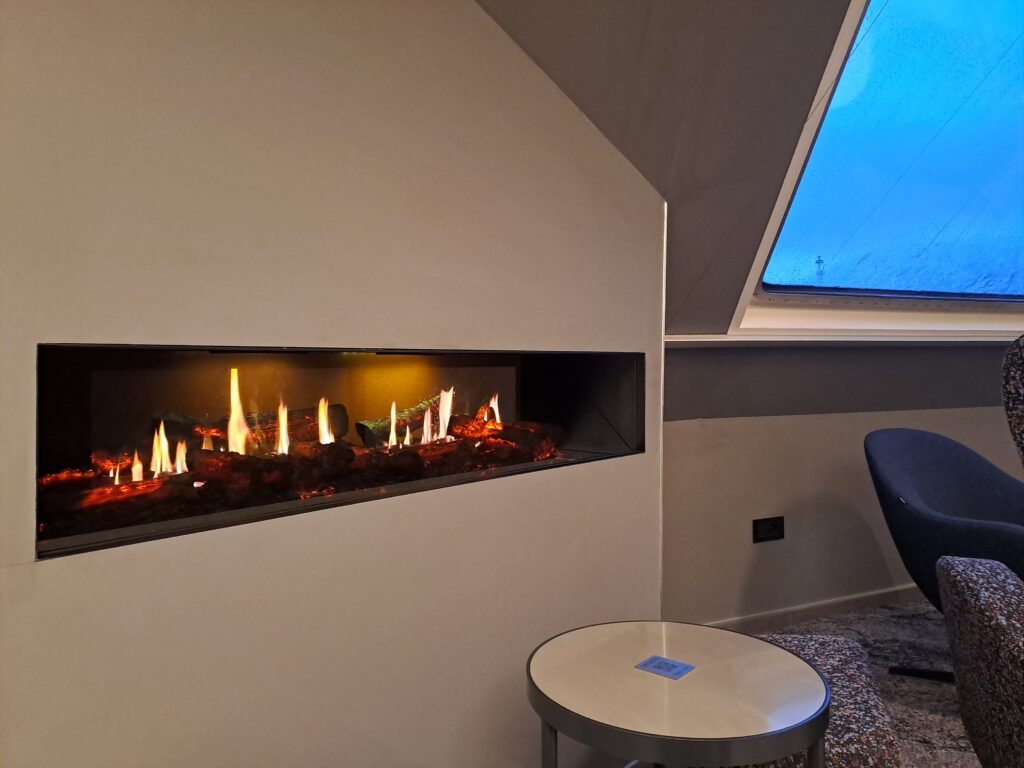
Outside Decks & Hot Tub
The outside decks were my favourite part of the Norway Coastal Express in winter!
Sailing with Havila, you’ll find the largest open space on deck 9, spanning almost the full length of the ship.
This spectacular promenade deck offers 360-degree panoramic views and is also the best spot for a walk or to see the Northern Lights.
This is where I spent most of my time, wrapped up in layers and thermals with my camera in hand, walking around the ship as the scenery changed from quiet settlements to imposing mountains.
There is always something new and stunning to photograph – I never wanted to go indoors!
Plus, the panorama deck was very social too. It tended to be the same people up there, snapping photos or enjoying a walk, so you really got to know your fellow passengers if you wished.
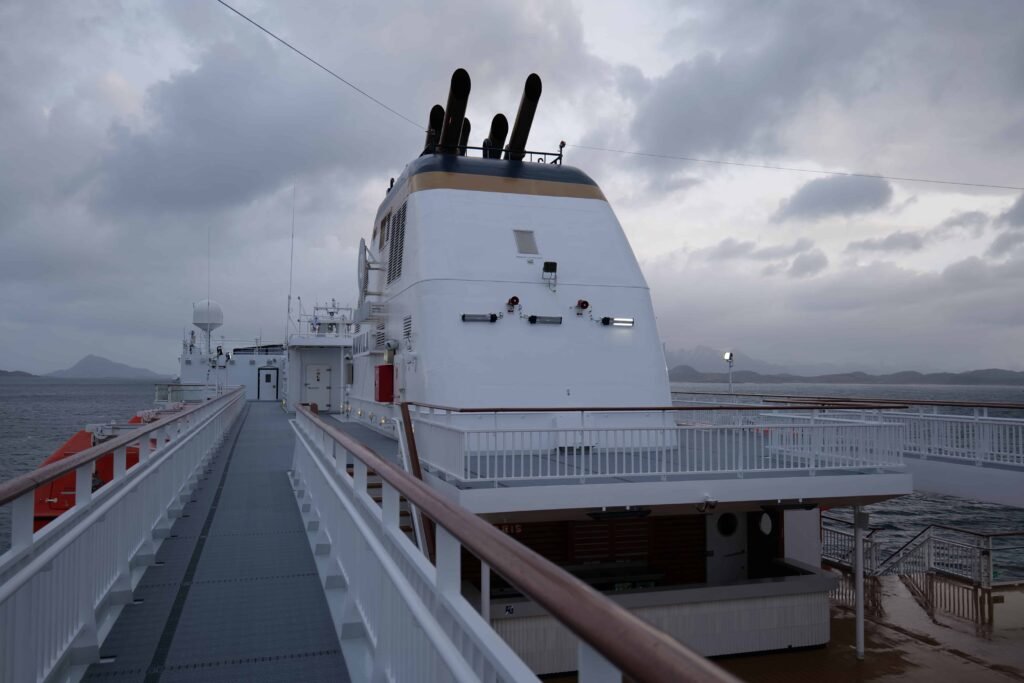
Deck 8 is where you’ll find the hot tub and sauna (yes, even in winter!) and the outdoor bar, which hosts the two “Troll Drink” events and the Arctic Circle crossing ceremony.
On my voyage, the bar wasn’t open much outside those events, as the weather was a bit unpredictable. But the atmosphere during the ceremonies was joyful!
The outdoor space on deck 8 is also partially undercover, which is perfect if you want to take photos and the weather is less great. It spans the rear and middle sides of the ship.
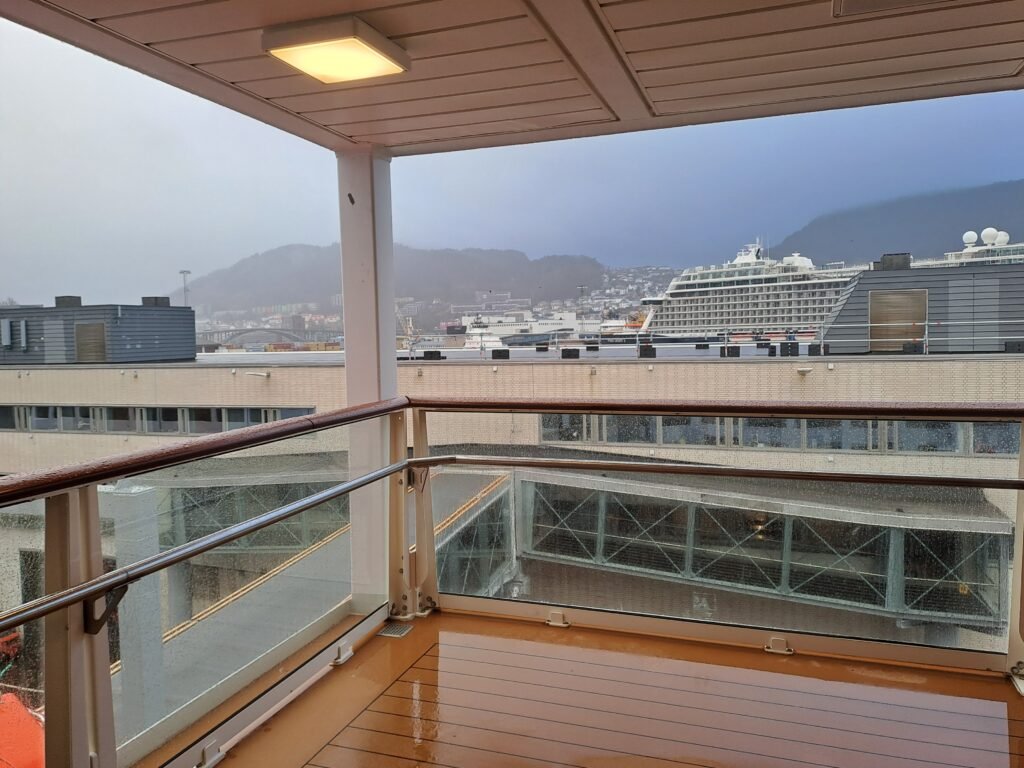
There are also smaller outdoor decks on Decks 6 (the Bow Viewpoint) and 7 (at the rear).
On Hurtigruten, the layout of the outside decks is very similar, with a large observation deck on the top deck, hot tubs on the one below, and then smaller observation and walking areas on the lower decks.
Katie’s Top Tip: Bring a good, insulated direct drink flask and fill it with a hot drink before heading outside – it’ll keep your hands (and tummy!) warm while you enjoy the incredible views. This was honestly the best thing I packed on this trip!
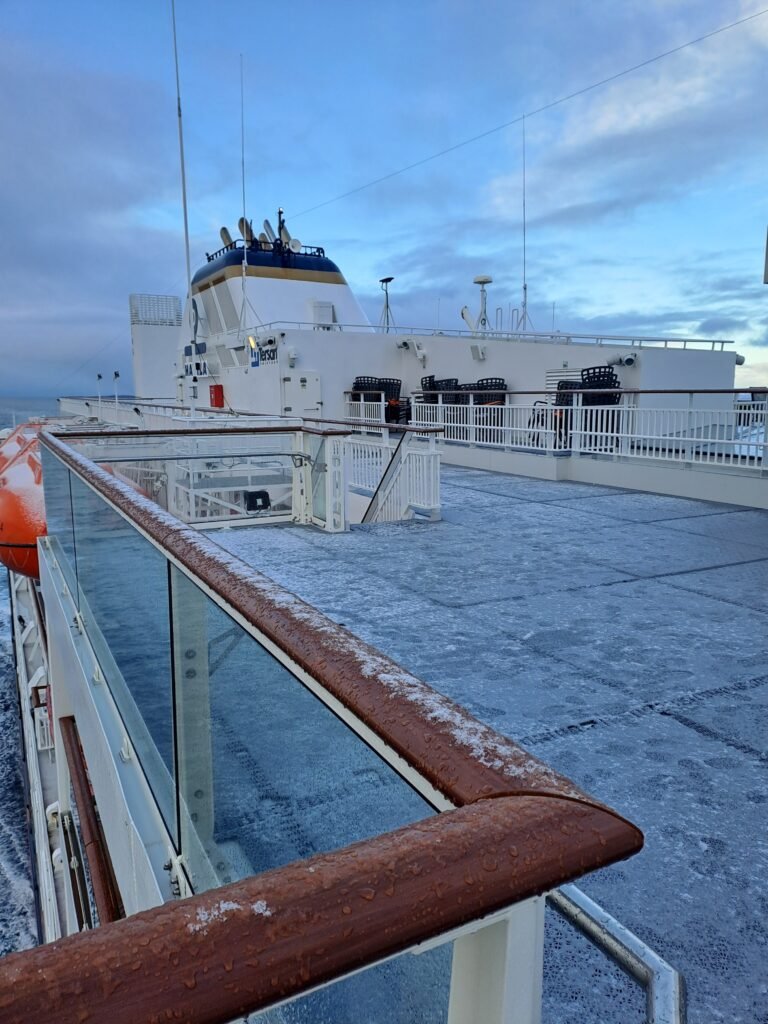
Norway Coastal Express Itinerary: Day-by-Day
The Norway Coastal Express in winter itinerary is a 12-day round trip from Bergen to Kirkenes and back – and it is the most scenic voyage I have ever taken!
Here is a quick overview of what you can expect day by day, so you know what’s ahead (and when to have your camera ready!):
Day 1 – Bergen: Set sail from Norway’s second city at 8:30pm. Start with a delicious first dinner before heading out to an outdoor deck or the panorama lounge to watch as you leave the bright lights of the city behind!
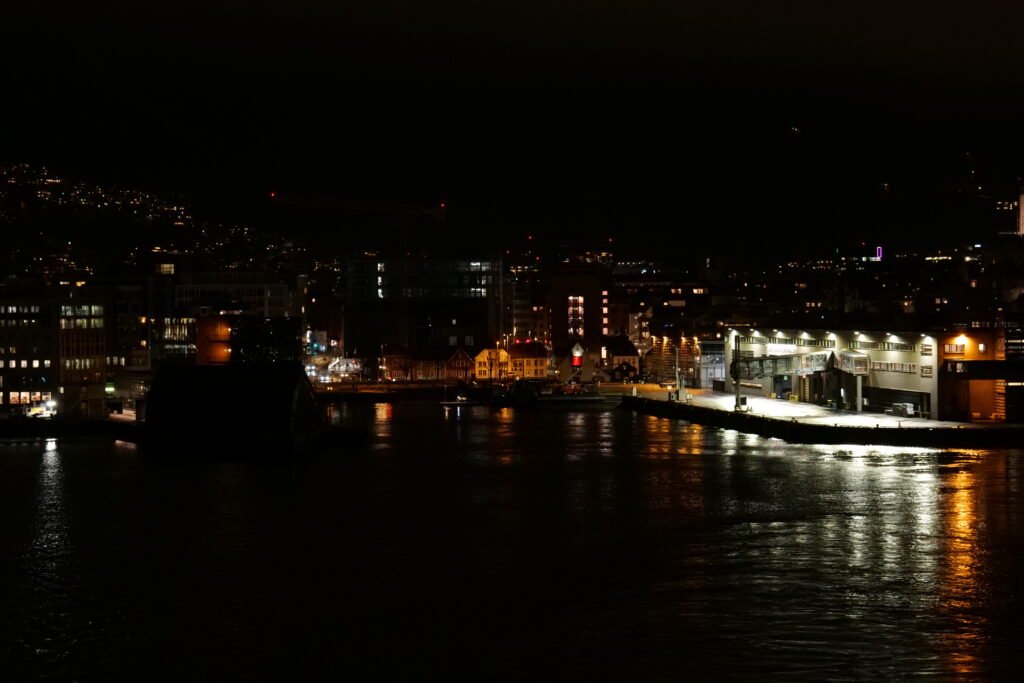
Day 2 – Ålesund & Geirangerfjord area: You might be up early enough to catch the brief 10-minute port call at Torvik, but the main stop today is Ålesund. You have all day to either visit the Art Nouveau city itself or book an excursion to see the mighty Geirangerfjord!
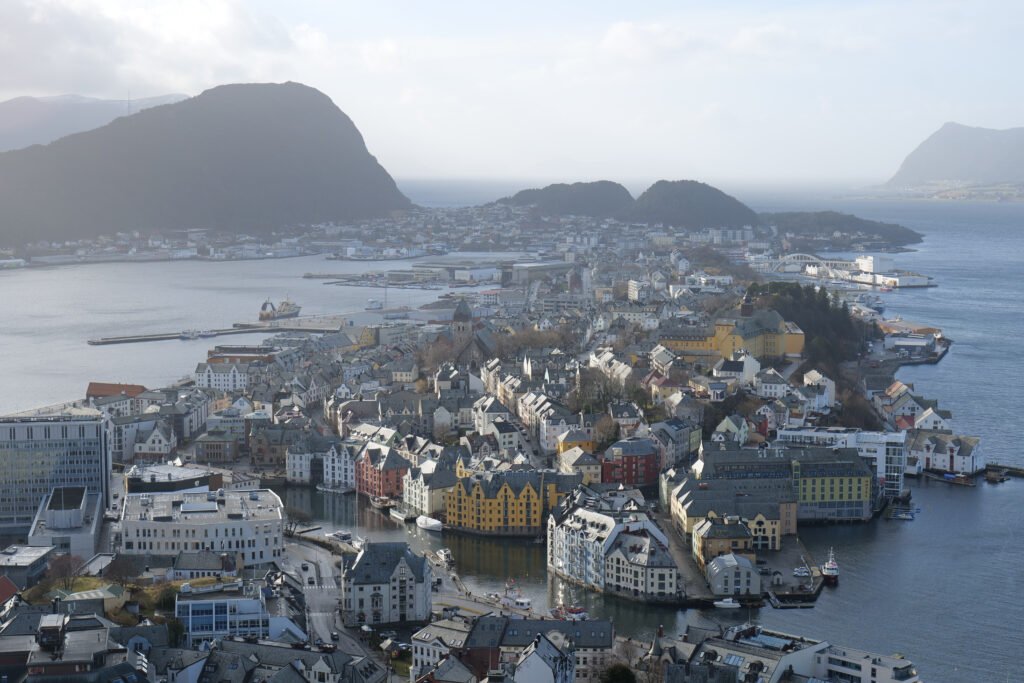
Day 3 – Trondheim: Norway’s former capital is rich in history and, of course, those famous colourful buildings lining the waterfront. Don’t miss Nidaros Cathedral and the old Bakklandet neighbourhood. Both are easy to reach on foot from the ship (although it’s a 30-minute walk), or you can join an excursion.

Day 4 – Arctic Circle Crossing & Bodø: You’ll cross the Arctic Circle early in the morning (our crossing was 7:40am), marked by the famous globe monument on Vikingen Island – more on that below! There’s also a short, scenic port call in Ørnes, a longer stop in Bodø (I recommend the Saltsraumen Tidal Current excursion), and you’ll reach the Lofoten Islands by evening.
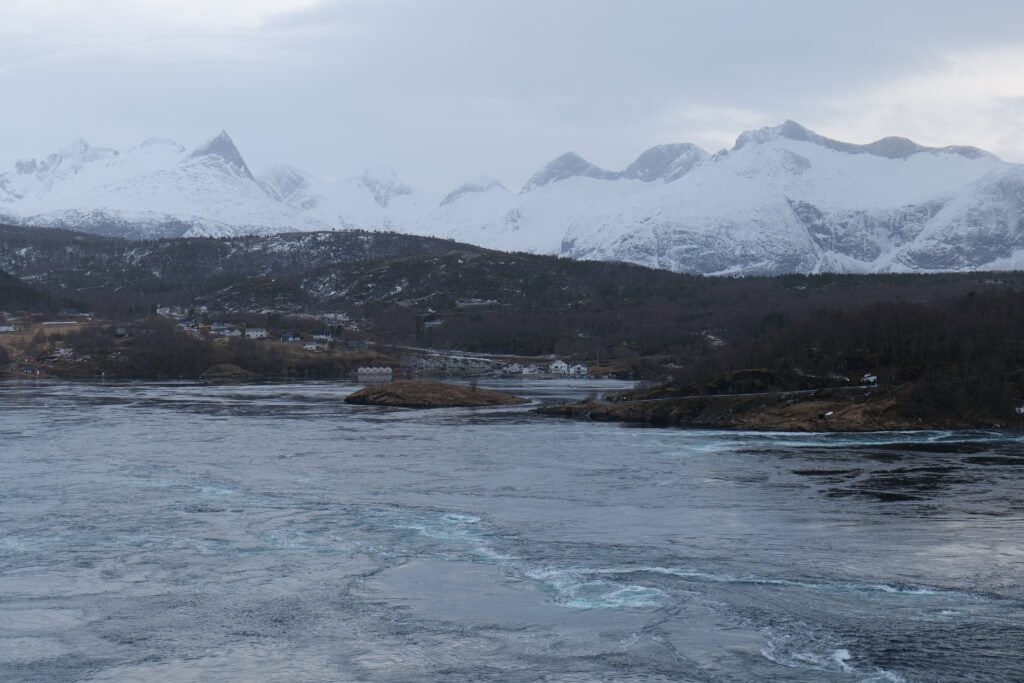
Day 5 – Tromsø: In the morning, you’ll make brief stops in Harstad and Finnsnes, before sailing to Tromsø. Known as the “Gateway to the Arctic,” Tromsø is a real highlight on this voyage, with amazing excursions for husky sledding, reindeer sledding or taking the Fjellheisen cable car.
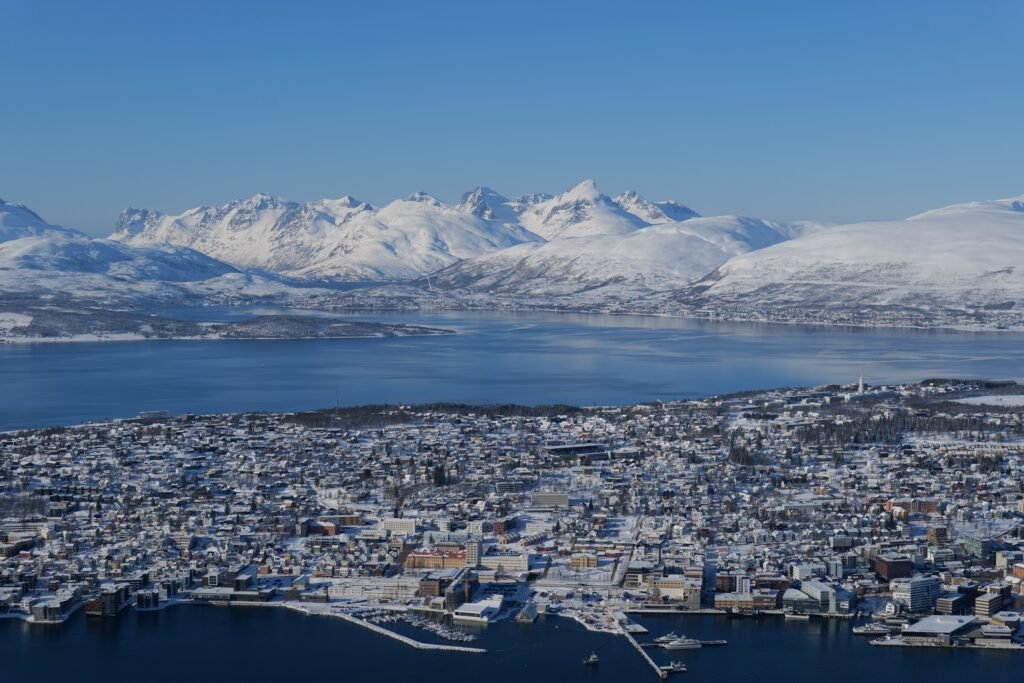
Day 6 – Honningsvåg & North Cape: You’ll call briefly at picturesque Havøysund in the morning, before reaching Honningsvåg. This is where you can join an excursion to North Cape, the northernmost point of mainland Europe – a true must-see! From there, you will sail to Kjøllefjord, which is only a short port of call but had some of my favourite scenery of the entire voyage!
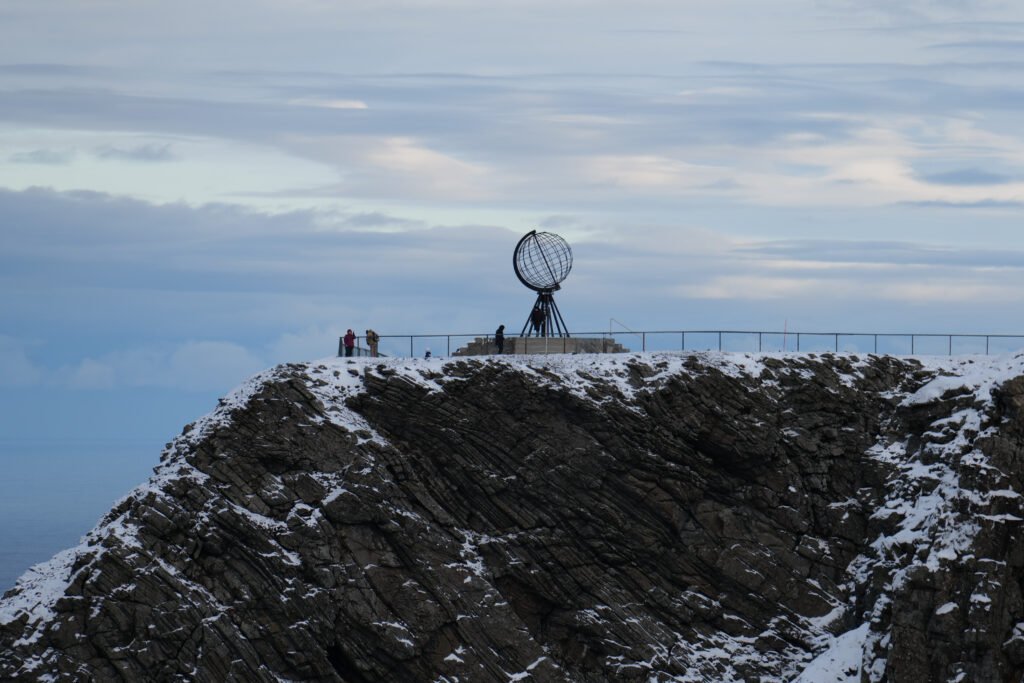
Day 7 – Kirkenes: Kirkenes is the turning point (or end point if you’re only travelling one way) before the Coastal Express returns Southbound. Kirkenes is perfect for a husky sledding excursion and a visit to the Snow Hotel, or a sightseeing tour near the Russian border. Upon leaving Kirkenes, you will also call at Vardø, a scenic little settlement.
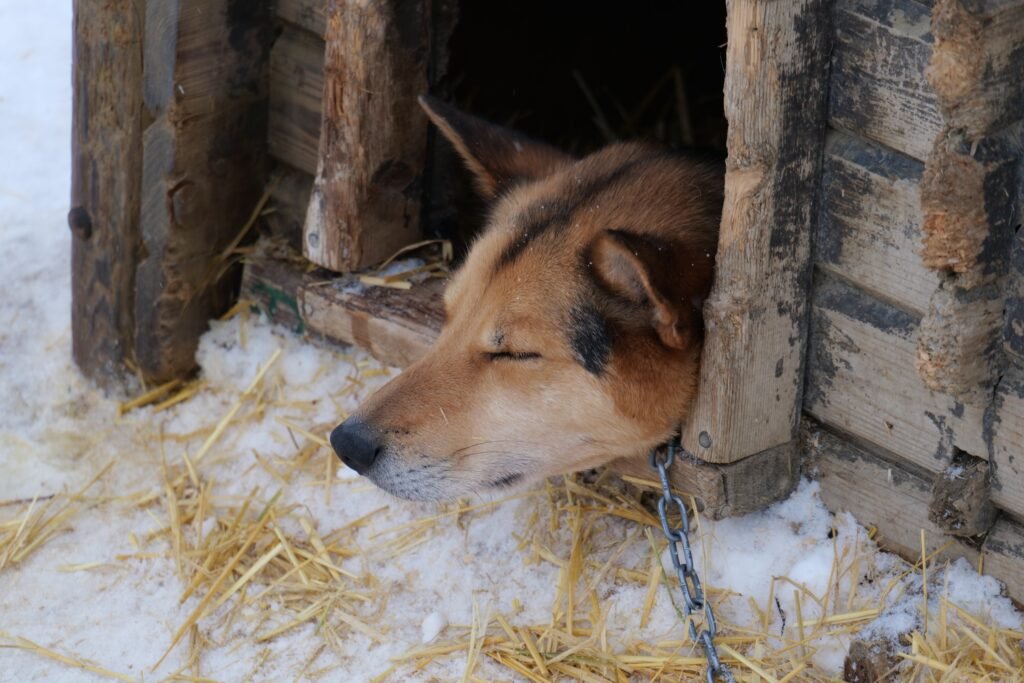
Day 8 – Hammerfest: In the morning, you will see picturesque Havøysund again, before arriving at Norway’s northernmost town, Hammerfest. Then, in the afternoon, make a brief call at the picturesque village of Øksfjord. You will reach Tromsø by midnight, where you can attend a beautiful midnight concert in the cathedral, if you wish.
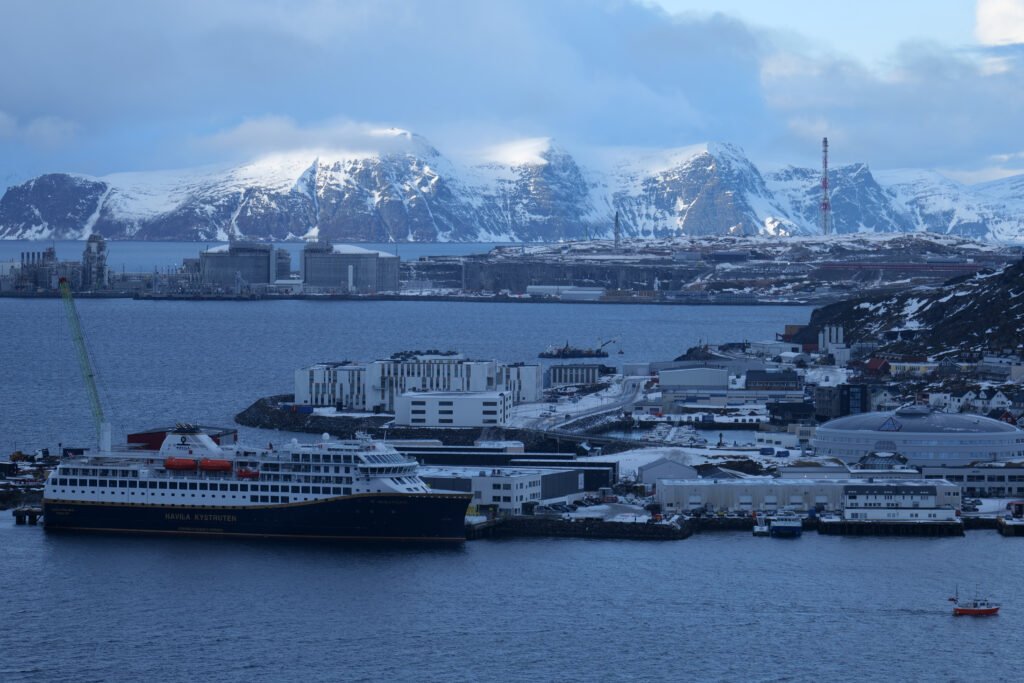
Day 9 – Stokmarknes: The voyage calls briefly at the ports of Harstad, Risøyhamn (famous for the narrow but picturesque Risøy Channel), and Sortland (with its beautiful blue buildings). Your main port of call is Stokmarknes, where I recommend you visit the fascinating Hurtigruten Museum to learn more about the Coastal Express. In the evening, you will once again arrive in the Lofoten Islands
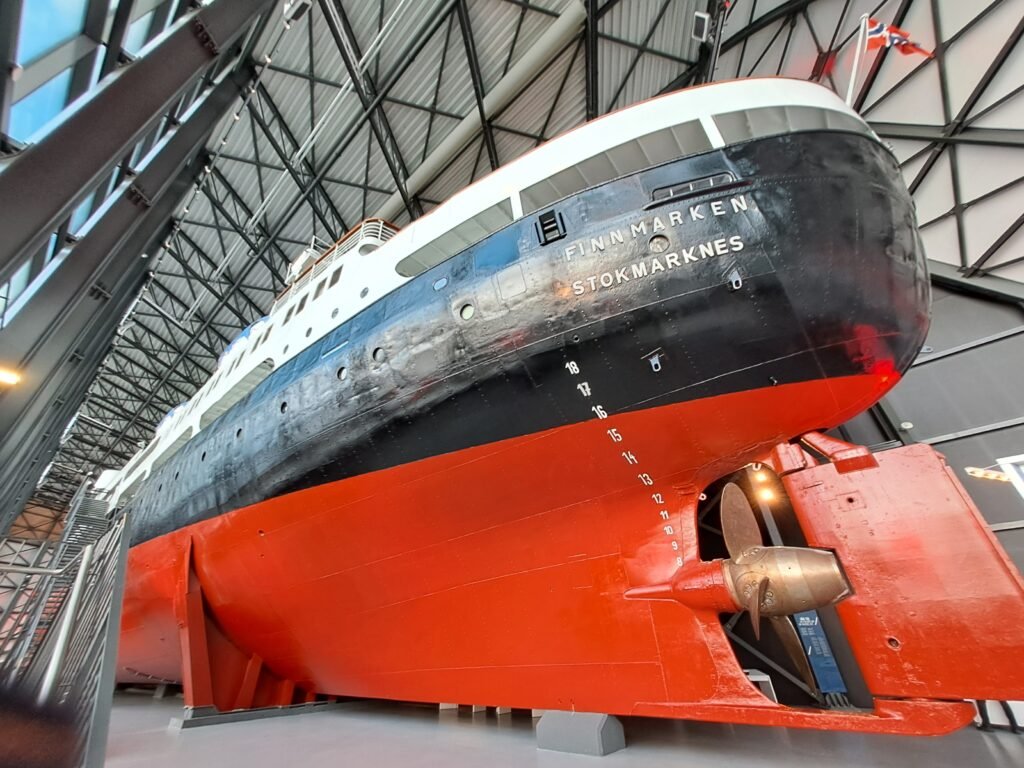
Day 10 – The Seven Sisters, Brønnøysund & Mount Torghatten: This was my favourite day for scenery! You will re-cross the Arctic Circle this morning, making brief stops in Nesna and Sandnessjøen. As you leave Sandnessjøen, you will have the opportunity to see the incredible Seven Sisters mountains. Then, in the mid-afternoon, you will have your longest port of call in picturesque Brønnøysund, before hopefully catching a glimpse of Mount Torghatten (the mountain with the hole) as you depart.

Day 11 – Trondheim & Kristiansund: You will make another long port of call in Trondheim, but this time at 6:30am. So if you’re up early and fancy another explore, this is perfect! The only new port of call today is Kristiansund in the afternoon, which will also be the last port where you can get off before returning to Bergen.

Day 12 – Return to Bergen: The final port you will see before reaching Bergen is Florø. After that, enjoy your final time out on deck or relaxing in the panorama lounge before returning at 2:45pm.
Katie’s Top Tip: Even though this is a set route that repeats on the way up and back, no two days ever feel the same! The beauty of the itinerary is that most often, the ports you don’t get to see Northbound, you will get to see Southbound, so there are very few actual repeats. Plus, the light, weather, and atmosphere shift constantly!
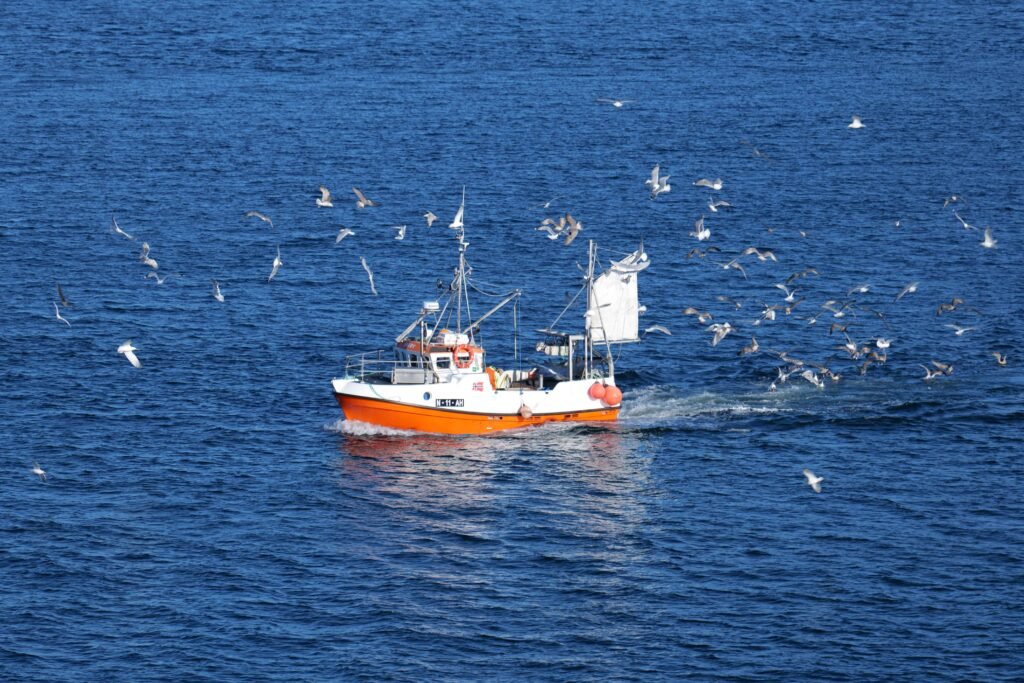
Excursions
You can book excursions in advance online (this is the safest way to guarantee your spot), but you can also sign up at the onboard excursion desk.
I booked most of my excursions online, but I also found it super easy to book last-minute at the desk, too, with the friendly and helpful team. If you do book on the ship, you will be charged using your room key.
The dog sledding and reindeer experiences in both Tromsø and Kirkenes are by far the most popular and do sell out quickly, so definitely book those ahead.
The Midnight Concert in Tromsø is also another excursion that booked up on my voyage.
As I mentioned earlier in this guide, both Havila and Hurtigruten offer the same ports and very similar excursions.
Katie’s Top Tip: If you’re on a budget, mix paid excursions with free self-guided port walks. Many stops, like Ålesund and Trondheim, are so easily walkable!

Crossing the Arctic Circle
Crossing the Arctic Circle is one of those moments you’ll never forget!
It happens twice during the Norway Coastal Express in winter itinerary – on Day 4 northbound and Day 10 southbound.
(Although the official ceremony only happens on the first crossing).
On my voyage, we passed the globe at 7:40am, and everyone gathered on deck with cameras ready to see the famous globe on the island of Vikingen.
The ship’s captain also sounds the horn to signal our arrival into the Arctic Circle!
Shortly after, the crew hosted a fun (and slightly chilly!) traditional ice ceremony, where brave passengers took part to mark the crossing.
And there’s also a guessing game to predict the exact crossing time, with the winner announced during the event.
Katie’s Top Tip: Set an early alarm for this one – you absolutely don’t want to miss it, and the exact crossing time does vary!

The Northern Lights
One of the biggest reasons to sail the Norway Coastal Express in winter is the chance to see the Northern Lights – and it is so magical when it happens!
Between late September and late March, the ships sail under dark arctic skies for hours each night, meaning it’s the perfect opportunity to see the elusive Aurora.
I saw the aurora three times during my trip in early March, between Tromsø and Kirkenes, and between the hours of 10pm and midnight.
Just make sure you turn on the Northern Lights alerts on your cabin phone so you’ll get notified when they appear!
Oh, and don’t worry about looking glamorous! I saw fellow passengers rushing out in slippers and dressing gowns – although do make sure you wrap up warm!
I found it helpful to leave my coat and camera by the door each night, so it was ready to go if needed.
Katie’s Top Tip: If you’re on the full round-trip voyage from Bergen, Havila offers a Northern Lights guarantee from 1st October to 31st March. So if you don’t see them, you can try again for free with a 6 or 7-day voyage! Hurtigruten also offers something similar, from 20th September to 31st March.
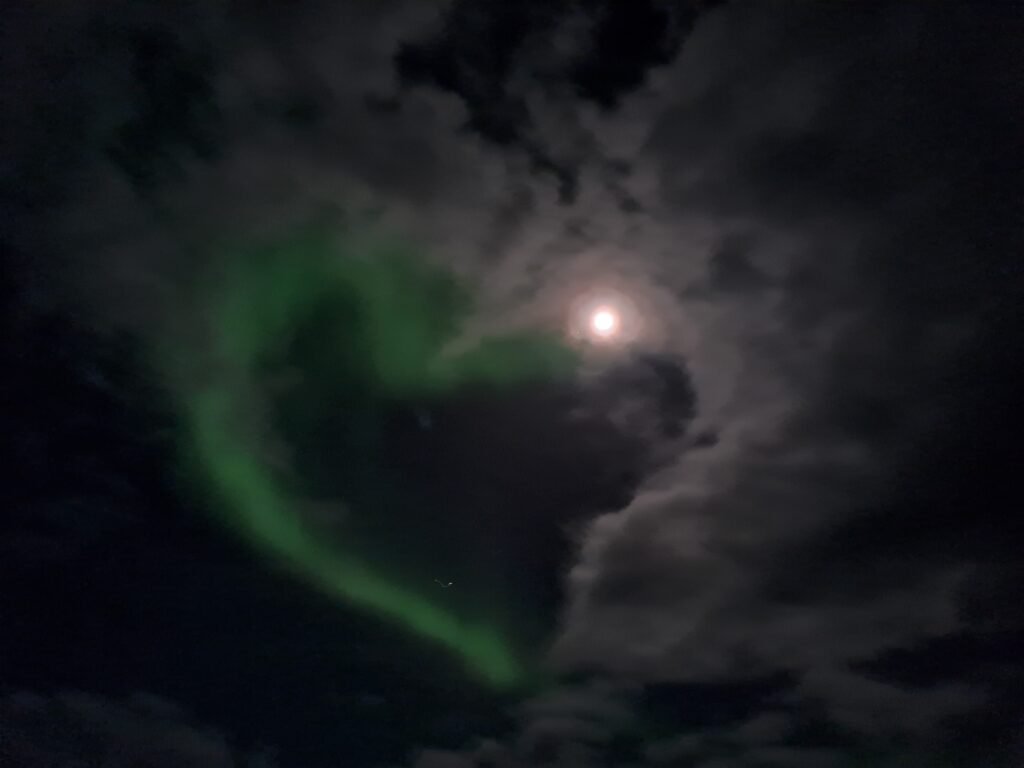
What to Pack (and What I Actually Used)
Packing for the Norway Coastal Express in winter is all about warmth and practicality.
You’ll spend plenty of time outdoors on deck, watching the beautiful scenery pass by, and maybe even spend your evenings under the Northern Lights, so layers are everything.
Start with a good quality thermal base layer, then add a fleece or wool mid-layer, and finish with a waterproof and windproof outer shell.
The key is layers that you can easily add or remove, as the ship itself is lovely and warm!
A hat that actually covers your ears, touchscreen gloves, insulated and waterproof snow boots, and a scarf or neck gaiter are also non-negotiable.
There is no dress code, even at dinner (unless you take part in the fine dining experience).
I mostly lived in leggings and cosy jumpers or fleeces, and never felt out of place, even going down to dinner.
A swimsuit for the jacuzzi, a portable charger, spare batteries for my camera, a thermos flask, USB handwarmers, and slip-on crampons were also essentials during my trip!
And if you’re prone to seasickness, bring motion-sickness tablets. The ships are incredibly stable, and most of the voyage is sheltered, but some areas of open sea can get a bit choppy.
Katie’s Top Tip: Don’t overpack! Cabins have limited storage, and free laundry facilities are available on board Havila ships. So stick to versatile, layered pieces you can re-wear.

Essential Norway Coastal Express in Winter Travel Tips
The Norway Coastal Express in winter is unlike any other trip you’ll take, with unbelievable scenery, the magical Northern Lights dancing overhead, and unforgettable ports of call.
But, especially in winter, it’s also very specific, with short daylight hours, weather that changes by the hour, and cold, Arctic temperatures to contend with.
So here are the 5 top tips I wish I’d known before boarding:
- Layers are your best friend. Temperatures can and do swing from mild in Bergen to freezing up north. So think thermal base layers, fleece or wool mid-layers, and a windproof and waterproof outer shell.
- Footwear matters. The decks are well-maintained, but they do get icy, so waterproof boots with good grip are essential.
- Use the laundry room. It’s free, easy and saves suitcase space. Plus, the detergent is dispensed automatically, so you don’t have to pack anything extra!
- Book excursions early. Anything involving huskies, reindeer, or more specialist tours like snowshoeing or snowmobiling fills up fast.
- Attend the daily briefings. They include essential updates about port times, events on board, the Northern Lights and, of course, the weather!
Katie’s Top Tip: I would recommend you don’t do laundry at open sea. Most of the time, you’re sailing through calm, sheltered waters. But there are times when you are in exposed open sea (you will be notified of this). Basically, I decided to do my laundry during one of these times, and the motion combined with the heat made me feel so unbelievably sick! Wouldn’t recommend!
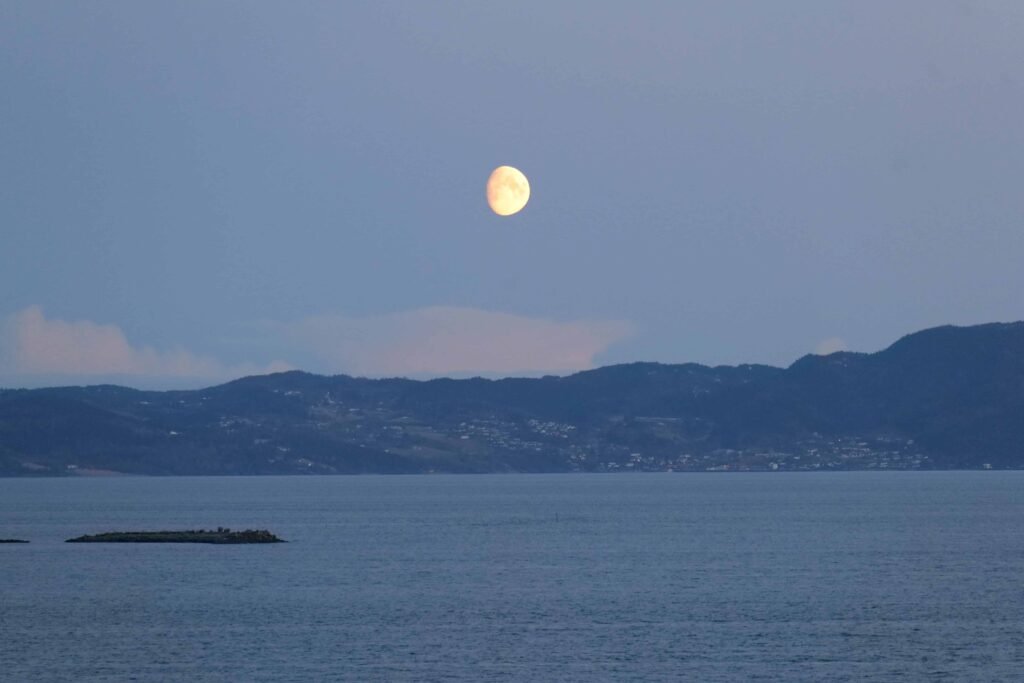
Is the Norway Coastal Express Worth It For Solo Travellers? (My Honest Review)
In my opinion, yes, absolutely! But it does depend on what kind of traveller you are and what experience you are looking for.
The Norway Coastal Express isn’t a flashy cruise ship with theatre shows, buffets, or spa experiences. Instead, it’s a real working ship, connecting some of Norway’s most remote communities, and showing its passengers an authentic look at Norway’s coastal life.
If you love nature, photography, hidden gems, scenic snowy views, and more peaceful, slow, local travel – this is the dream voyage for you!
But if you’re looking for a party atmosphere or fast sightseeing, this definitely isn’t that.
For me, what made the Coastal Express so worth it as a solo female traveller was how safe and structured it felt, but also flexible and casual.
I didn’t have to worry about being formal for dinner or around the ship, I could be as social or as independent as I wanted, and I could pick and choose whatever I wanted to do in every port.
As a solo female traveller, that literally describes my dream trip!
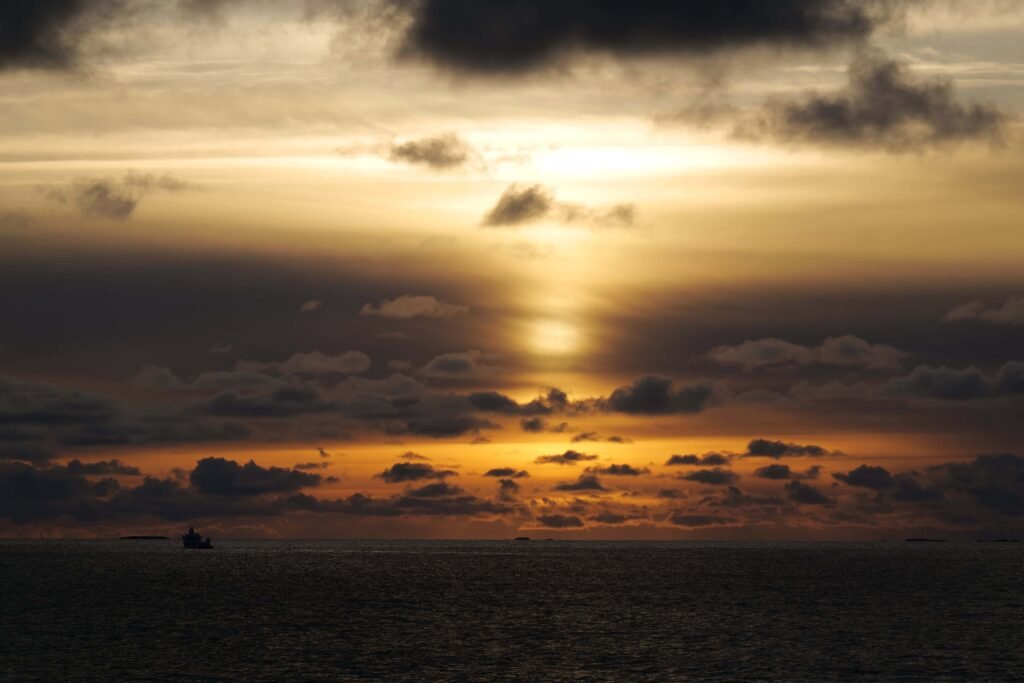
I also loved waking up somewhere new every morning, with ever-changing scenery that always felt completely different to the day before, without having to plan a thing.
And the views are some of the most incredible I have ever seen, even after solo travelling to 24+ countries in Europe.
From tiny fishing villages and Arctic sunsets, to majestic mountains and the Northern Lights, I made memories to last a lifetime!

I also loved the crew! They genuinely went out of their way to make sure I felt comfortable as a solo traveller. The restaurant team were always checking whether I was happier with a solo or group table, always remembered my name, and always made conversation. And the excursion team were also so genuinely helpful – not just salesy.
And then I also feel I have to mention age.
I was 21 years old at the time of the voyage, and I was honestly a little nervous about being a young woman on a solo “cruise.” But I honestly never felt like I didn’t fit in.
There were a whole mix of ages, both locals and tourists, and everyone I met was so friendly!
So whether you sail with Havila or Hurtigruten, the Norwegian Coastal Express cruise is the ultimate solo winter adventure!
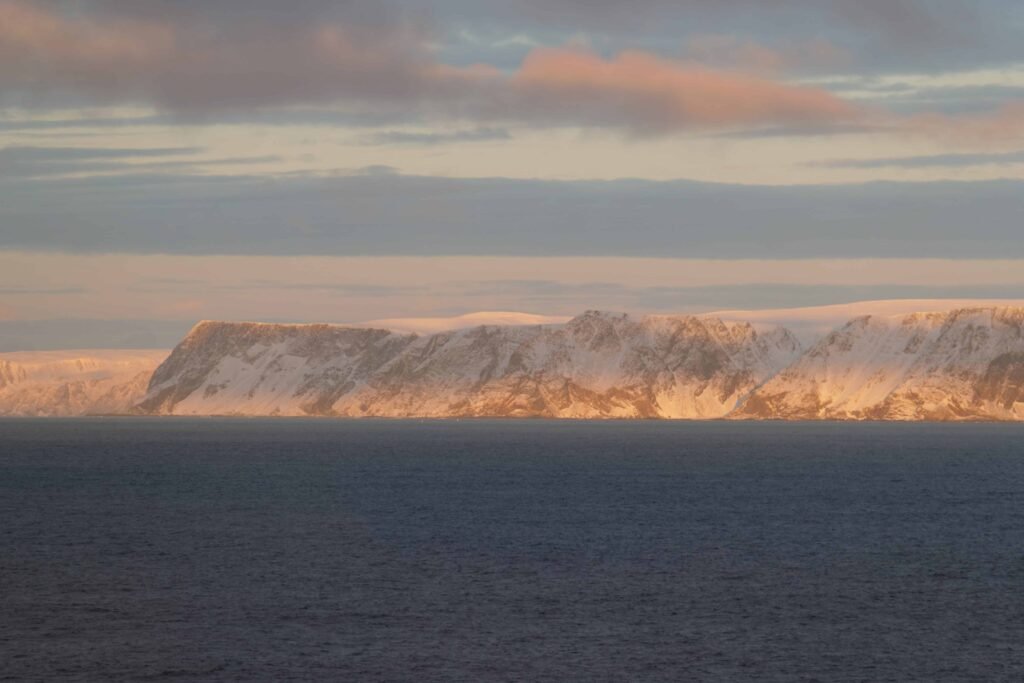
FAQ: Norway Coastal Express for Solo Travellers
Is the Norway Coastal Express safe for solo female travellers?
I found the Norway Coastal Express to feel very safe for me as a solo female traveller!
Norway is consistently ranked one of the safest countries in the world, and the Coastal Express (both Havila and Hurtigruten) definitely reflects that.
The crews are professional, respectful, and very used to welcoming solo travellers – so I never felt out of place on board.
Plus, the atmosphere is relaxed, casual and friendly, with plenty of space to either socialise with fellow passengers or keep to yourself – whatever you prefer!
What’s the dress code on board?
There’s no formal dress code as this isn’t a cruise, it’s a working coastal voyage. Most people dress in comfy, practical layers (even at dinner!)
I lived in leggings and then jumpers or a cosy fleece, and I never felt like I stood out.
You’ll also likely spend a lot of time walking on deck or heading out on excursions, so warm, waterproof outerwear and non-slip boots are essential.
Basically, prioritise warmth over style. No one cares about appearances here!
Can you see the Northern Lights on the Norway Coastal Express?
Yes – in fact, it’s one of the best ways to see them!
Both Hurtigruten and Havila sail right through the Arctic Circle, which means you’re travelling in a prime Northern Lights location. The crew even makes announcements if the lights appear.
Plus, Hurtigruten and Havila offer a Northern Lights guarantee on the round-trip between October and March.
Is there Wi-Fi on board?
Yes! Both Havila and Hurtigruten offer Wi-Fi throughout the ship as part of your package.
It’s not always lightning fast, but on Havila I mostly found it reliable enough for messaging, sharing photos, light browsing and video calls.
Do solo travellers get their own table for meals?
It depends on availability.
During my voyage, I was always asked at breakfast what kind of table I wanted. And then for lunch and dinner, I requested a solo table during the first lunch, which then stayed mine for the whole voyage.
If ever it was too busy at breakfast for solo tables, I was always asked first whether I minded sharing.
Is food included on the Coastal Express?
That depends on the ticket type you choose. Both Havila and Hurtigruten offer fare options with full board and fare options that are cabin-only.
Personally, I think choosing a package that includes food is a smart choice, as the food is local, fresh and totally delicious – plus it’s also one less thing to have to think about!
All meals are usually included as standard on the round-trip with Havila.
Which direction is better – Bergen to Kirkenes or Kirkenes to Bergen?
If it’s your first time, I recommend Bergen to Kirkenes (northbound). You start in the beautiful fjords of the south and slowly make your way into the Arctic, stopping at the most popular ports: Ålesund, Honningsvåg and Tromso.
But the southbound route (Kirkenes to Bergen) is more affordable and also quieter, as a lot of passengers get off in Kirkenes. Plus, the scenery is still beautiful, you just won’t have as many long stops.
Ultimately, though, if you have the time and budget, do the full 12-day round trip. It’s so worth it!
What’s the best cabin type for solo travellers?
Both Havila and Hurtigruten offer a wide range of cabins, from simple inside rooms to luxurious balcony suites.
For solo travellers, a sea view cabin is the perfect balance between more affordable than a suite, while still providing a dreamy experience. This is what I chose on my round-trip!
But inside cabins are a lot cheaper and also perfectly comfortable if you plan to spend most of your time in the lounges or on deck.
If you’re sailing with Havila, their cabins are newer and more modern, whereas Hurtigruten’s cabins are older but still cosy.
How far in advance should you book?
For winter sailings, you can usually book last-minute and still find availability (my sailing wasn’t full), but it’s still smart to reserve your preferred dates at least three to six months in advance.
Suites and cabins with windows typically go first, and some excursions (like dog sledding or the North Cape visit) sell out quickly too.
If you’re flexible, last-minute deals do pop up, but you’ll have less choice over cabins.
Read More About Travel in Norway:
- 11 Things To Do in Oslo in Winter (That Aren’t Just Museums)
- 12 Magical Things To Do in Bergen in Winter (Cosy & Fun!)
- Norway Coastal Express in Winter: Solo Travel Guide + Review
- Svolvaer Travel Guide (+ 7 Things To Do in Svolvaer, Norway)
- The BEST Northern Lights Tour From Tromsø (Review + Tips!)
- Is Norway Safe For Solo Female Travellers? (+ Safety Tips)
- 15 BEST Things to Do in Tromsø in Winter for First-Timers

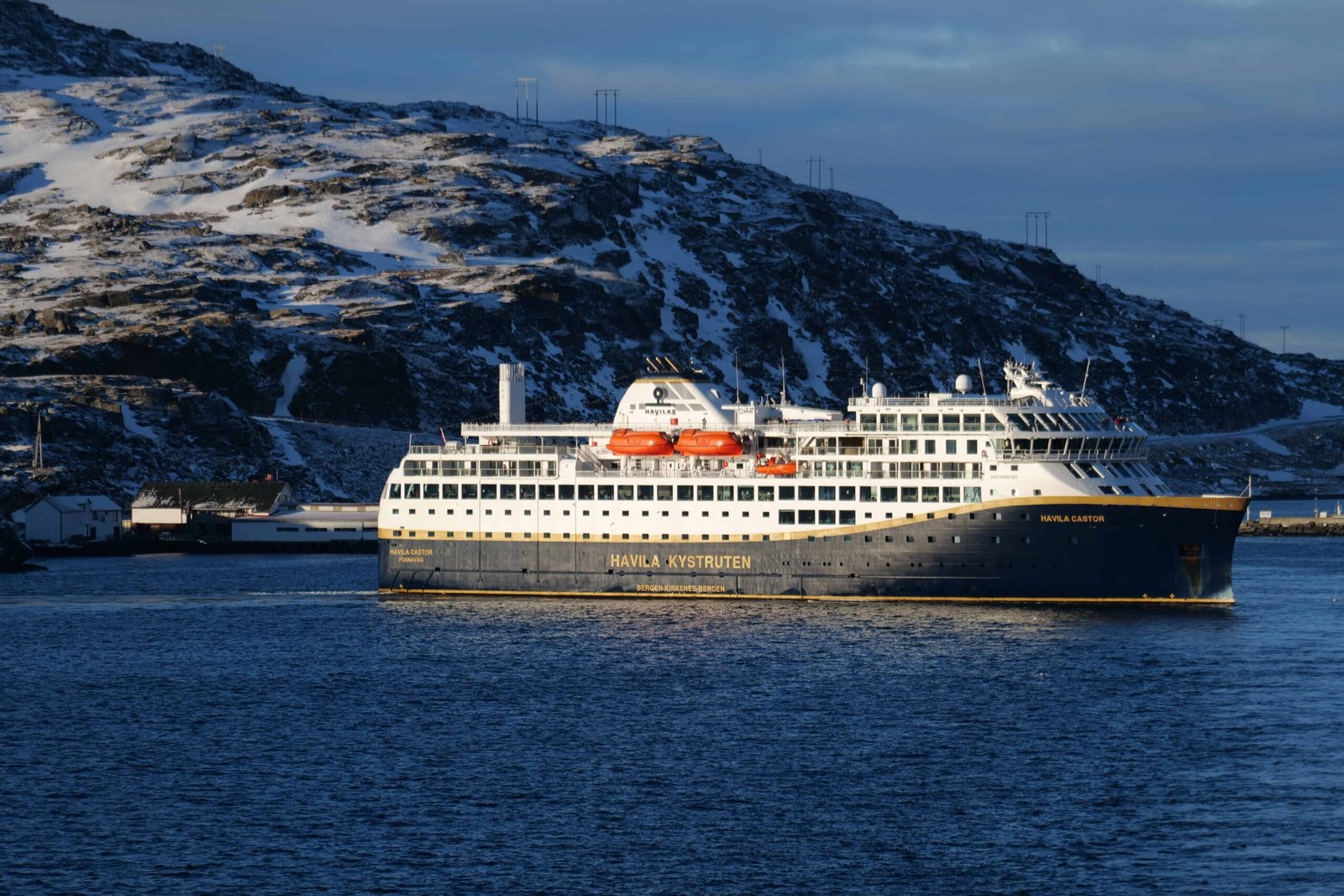
One Comment